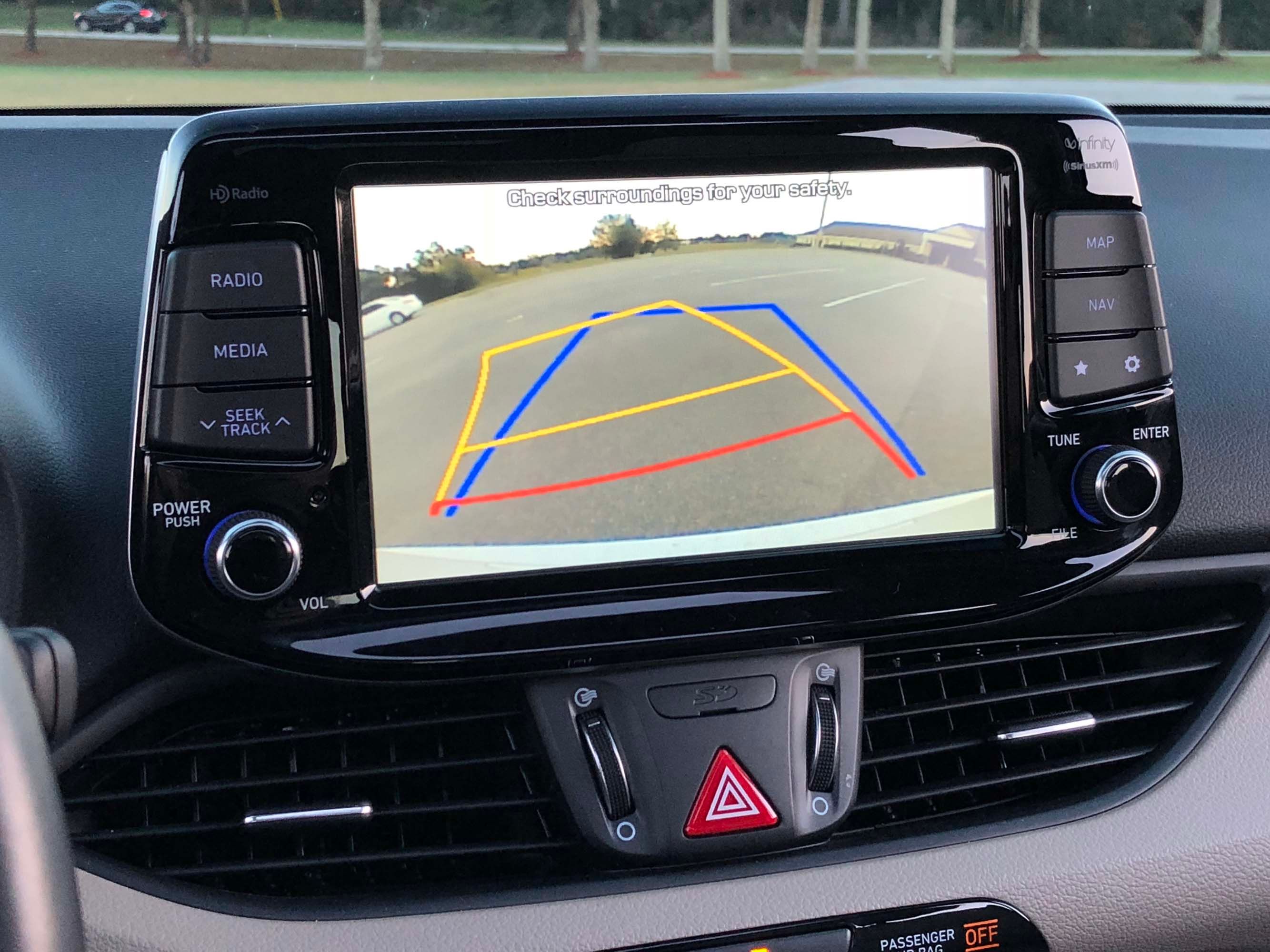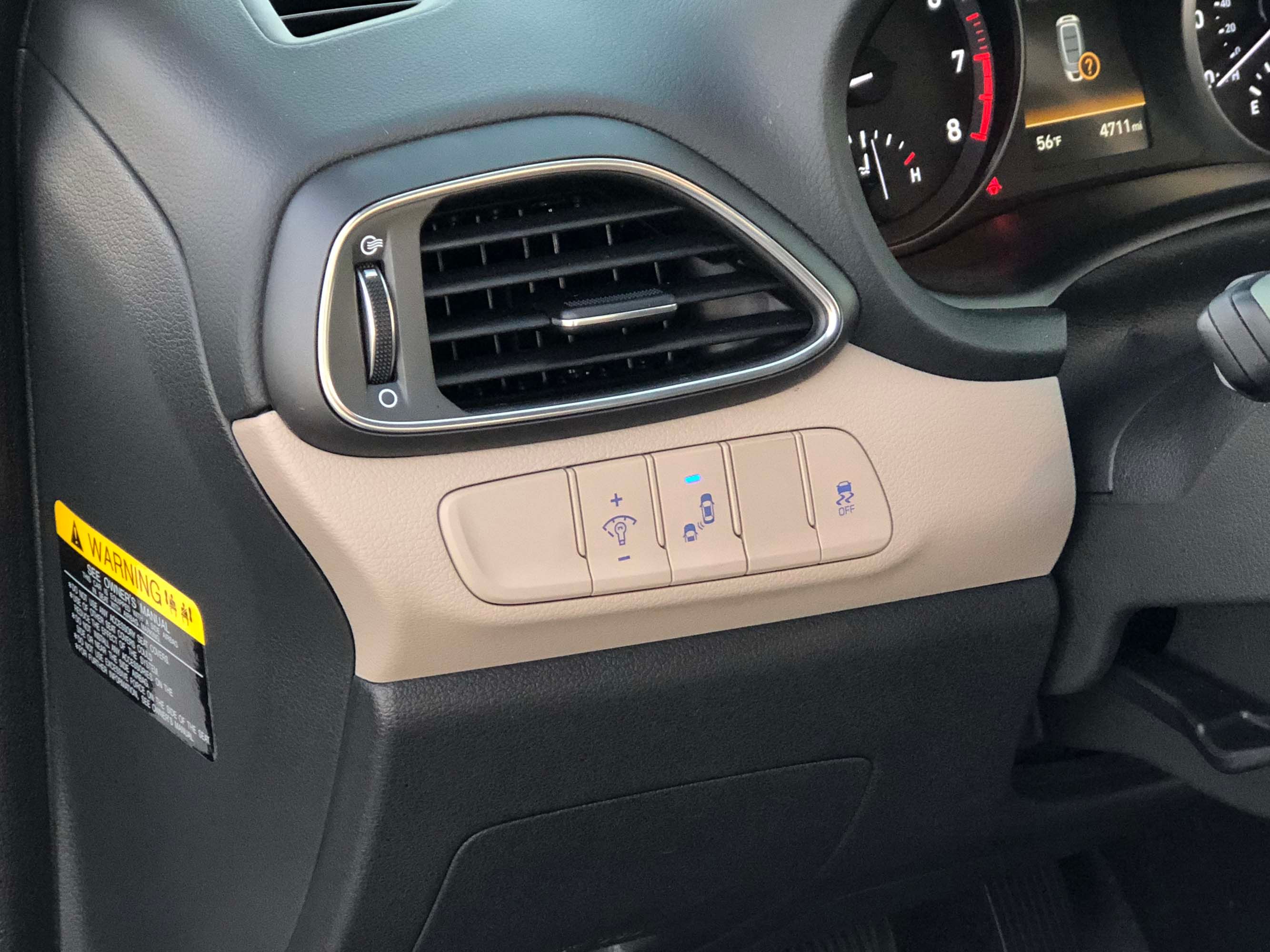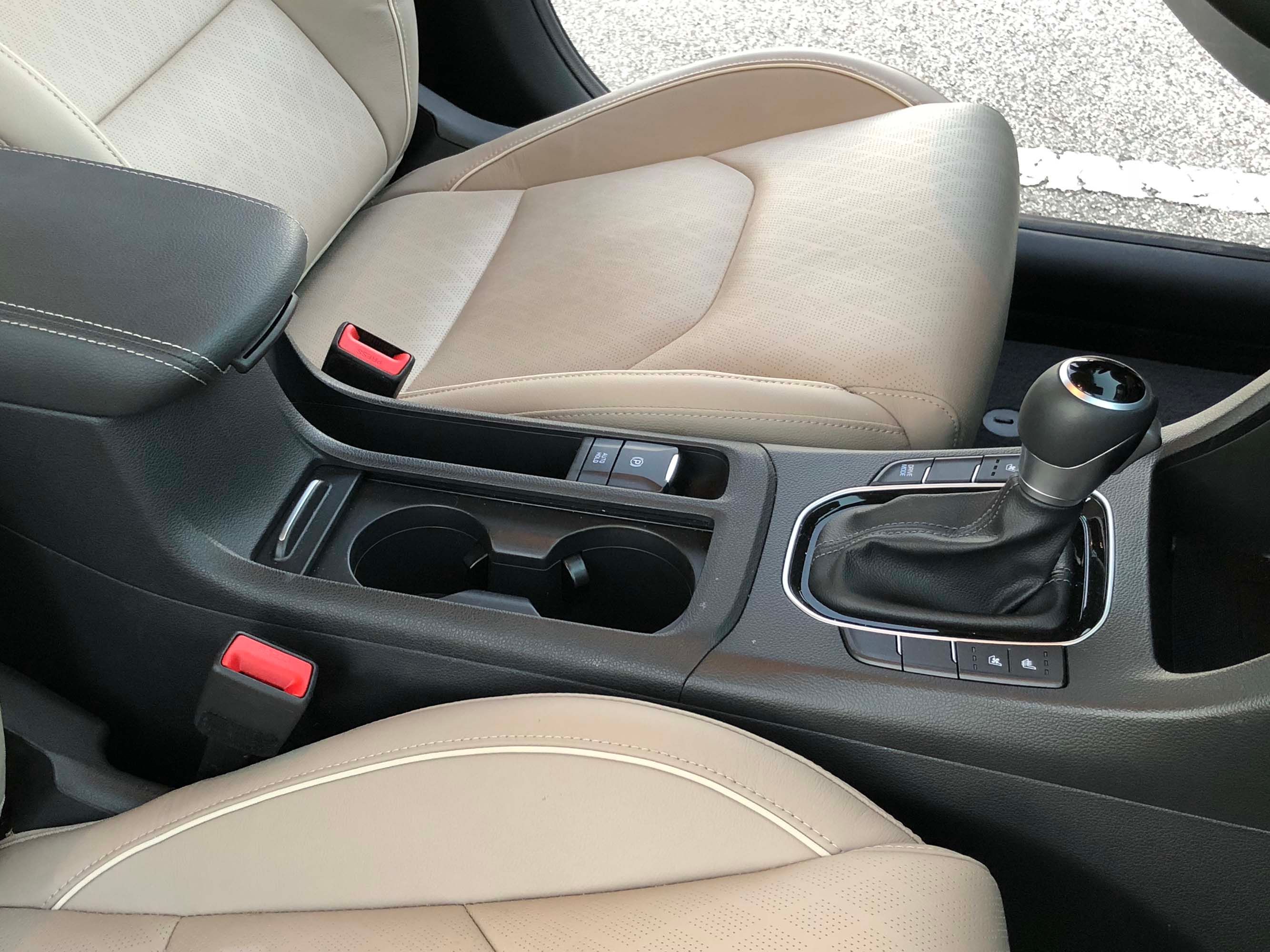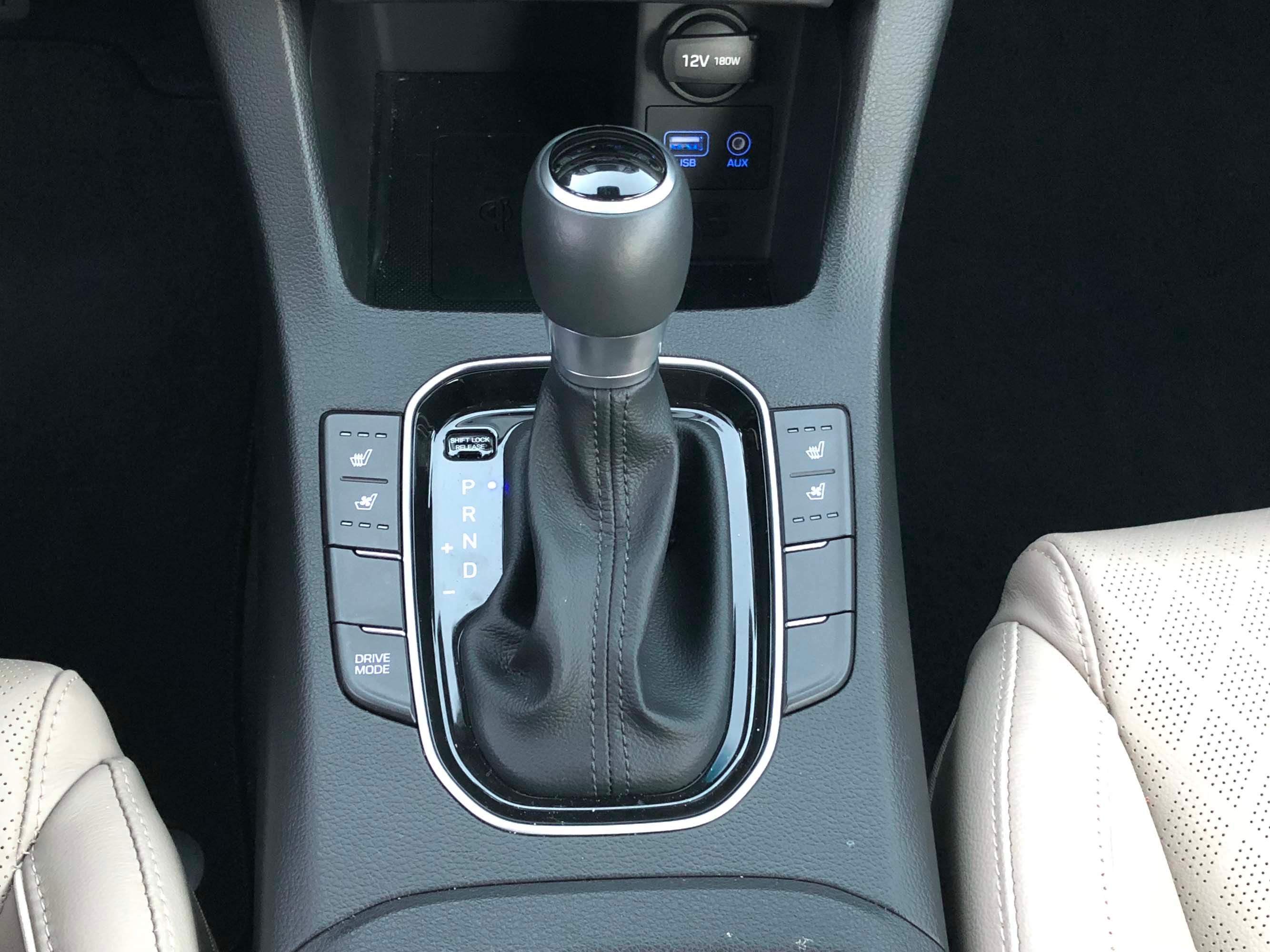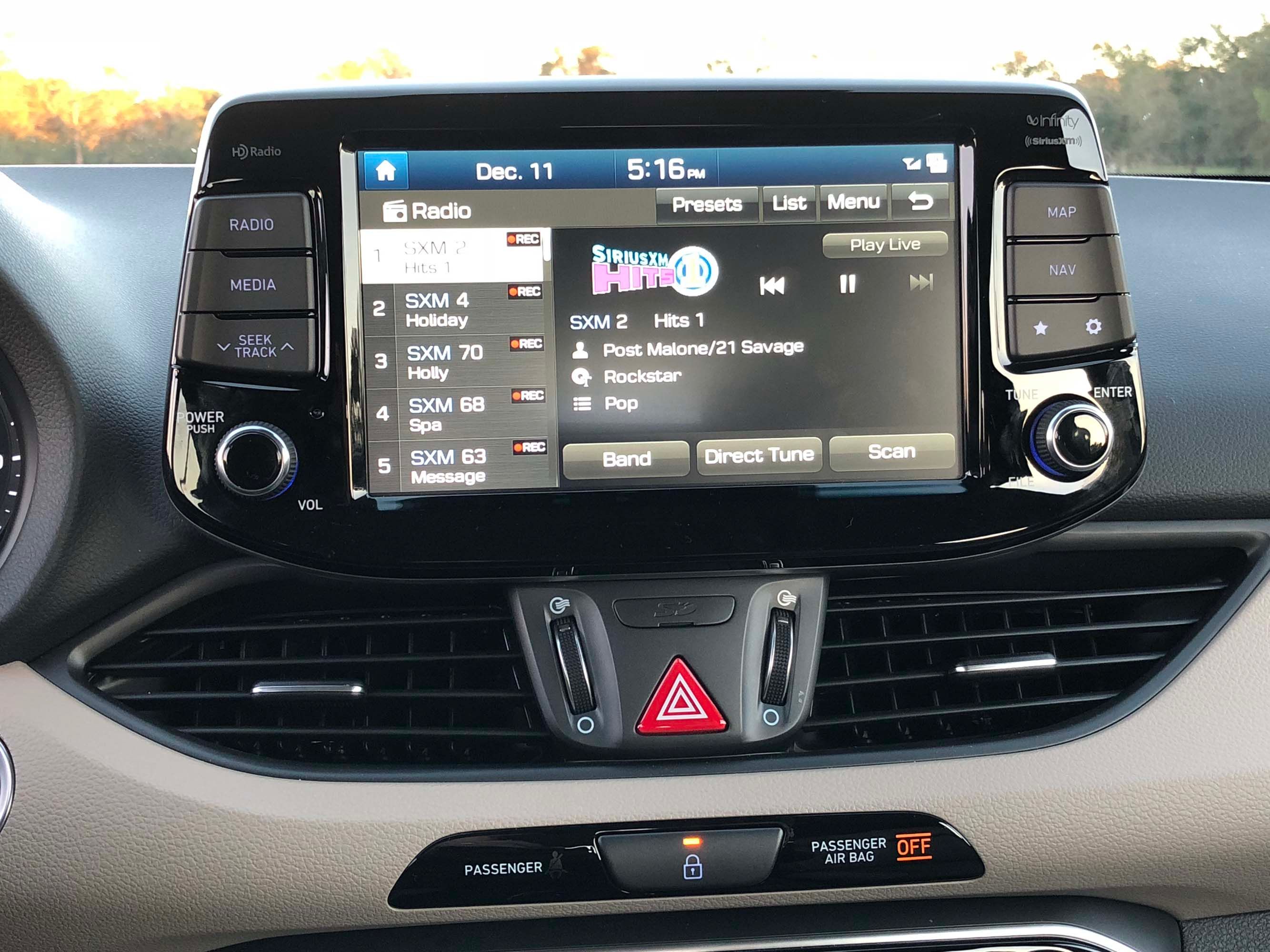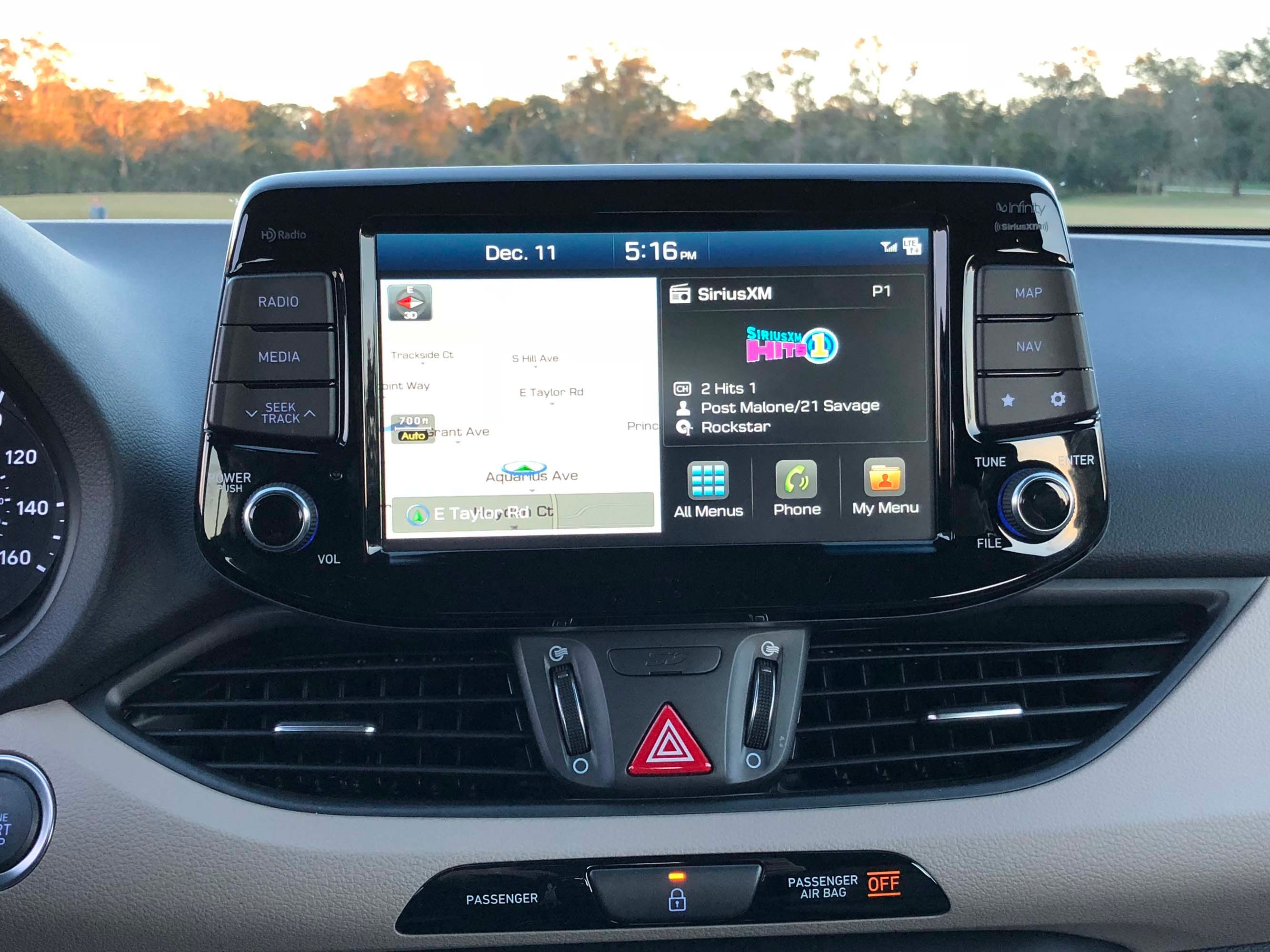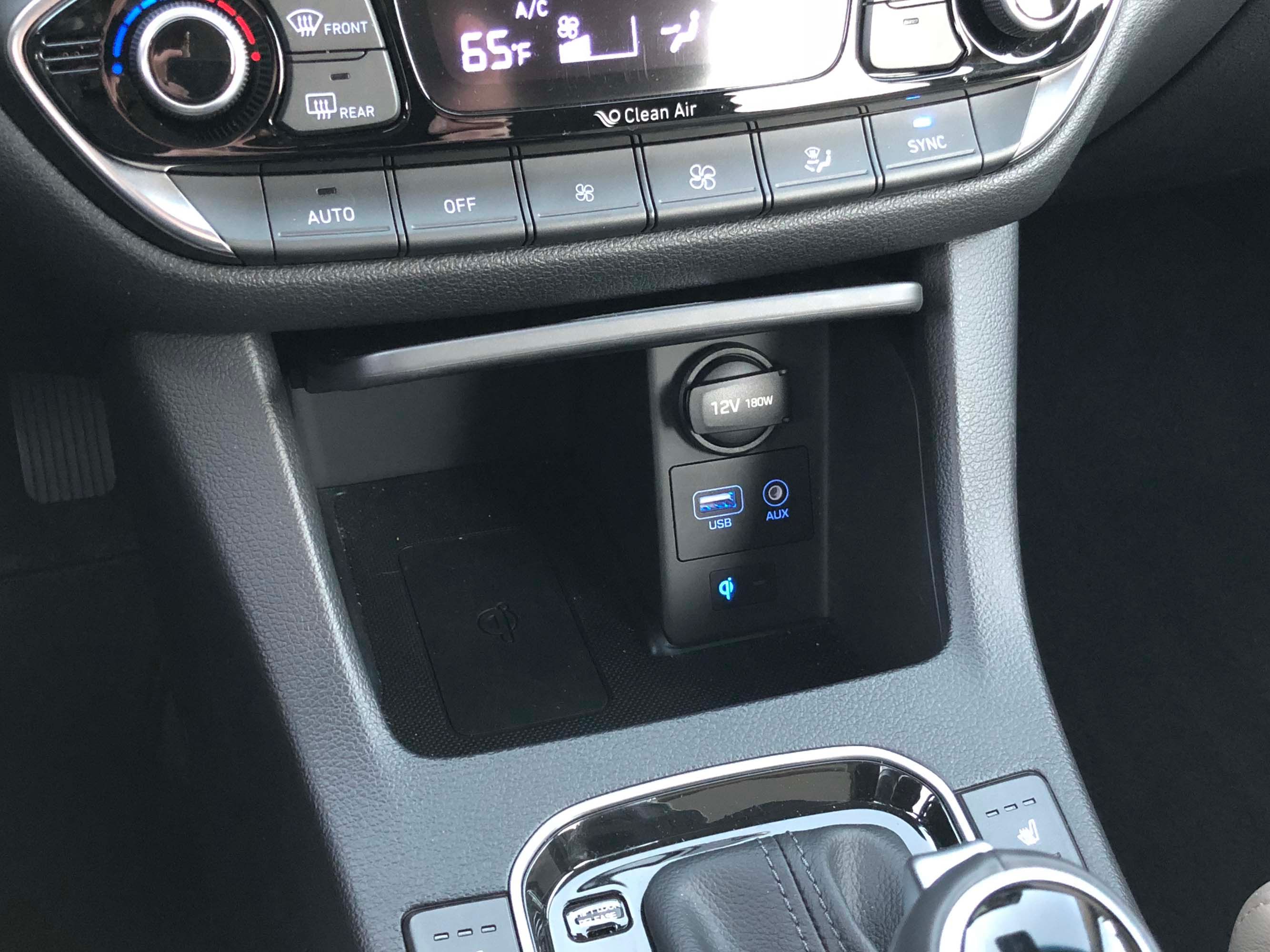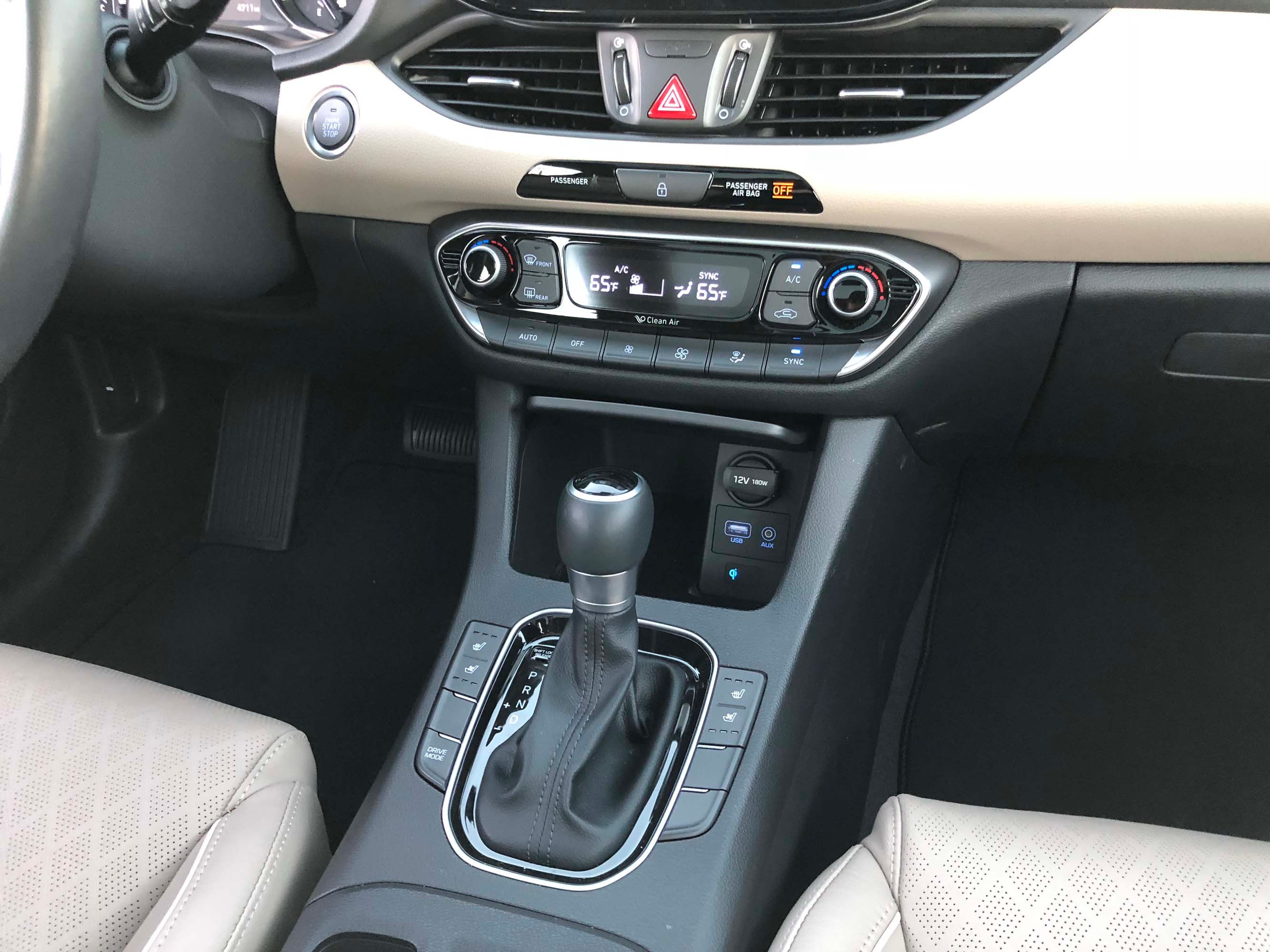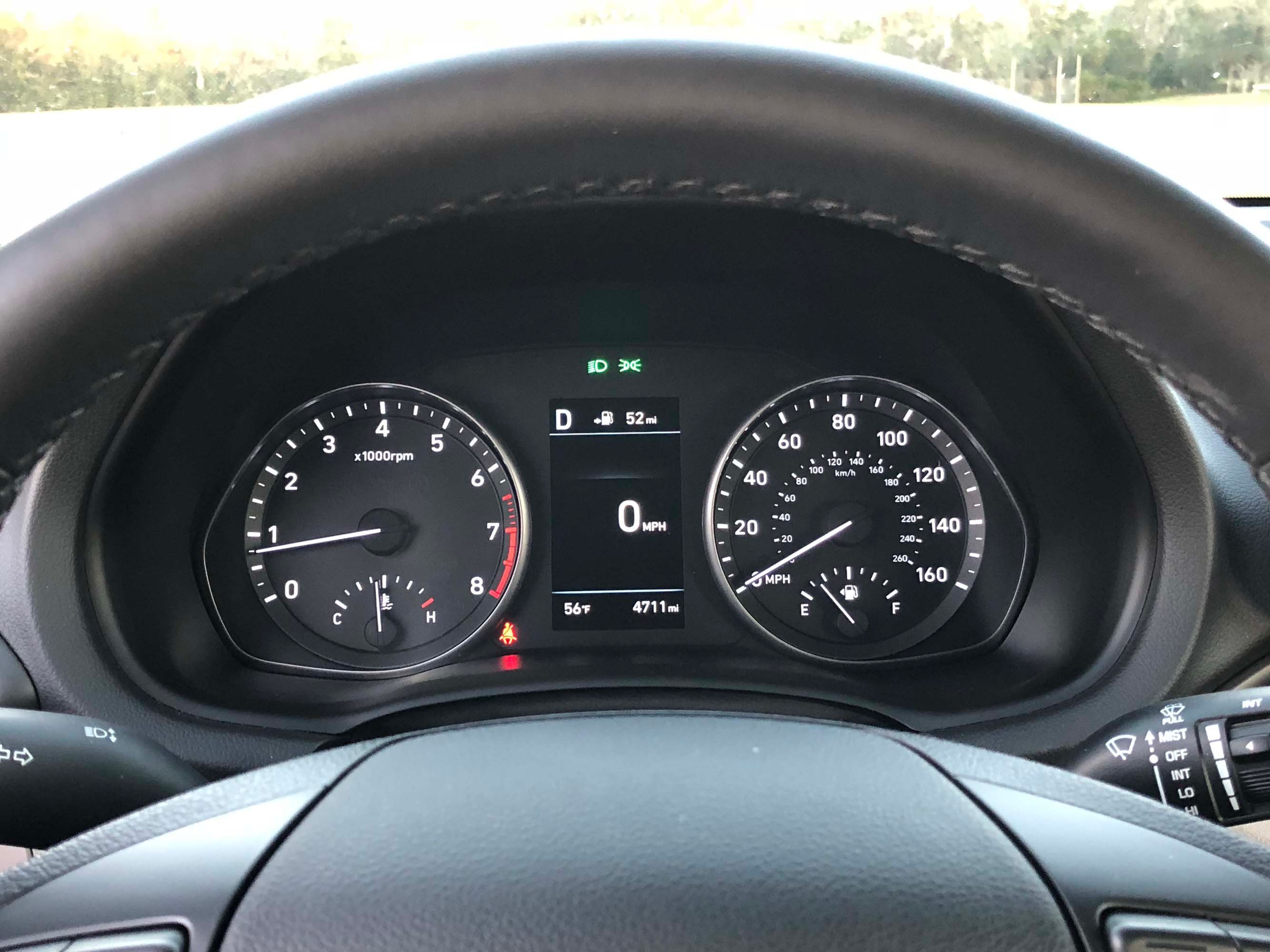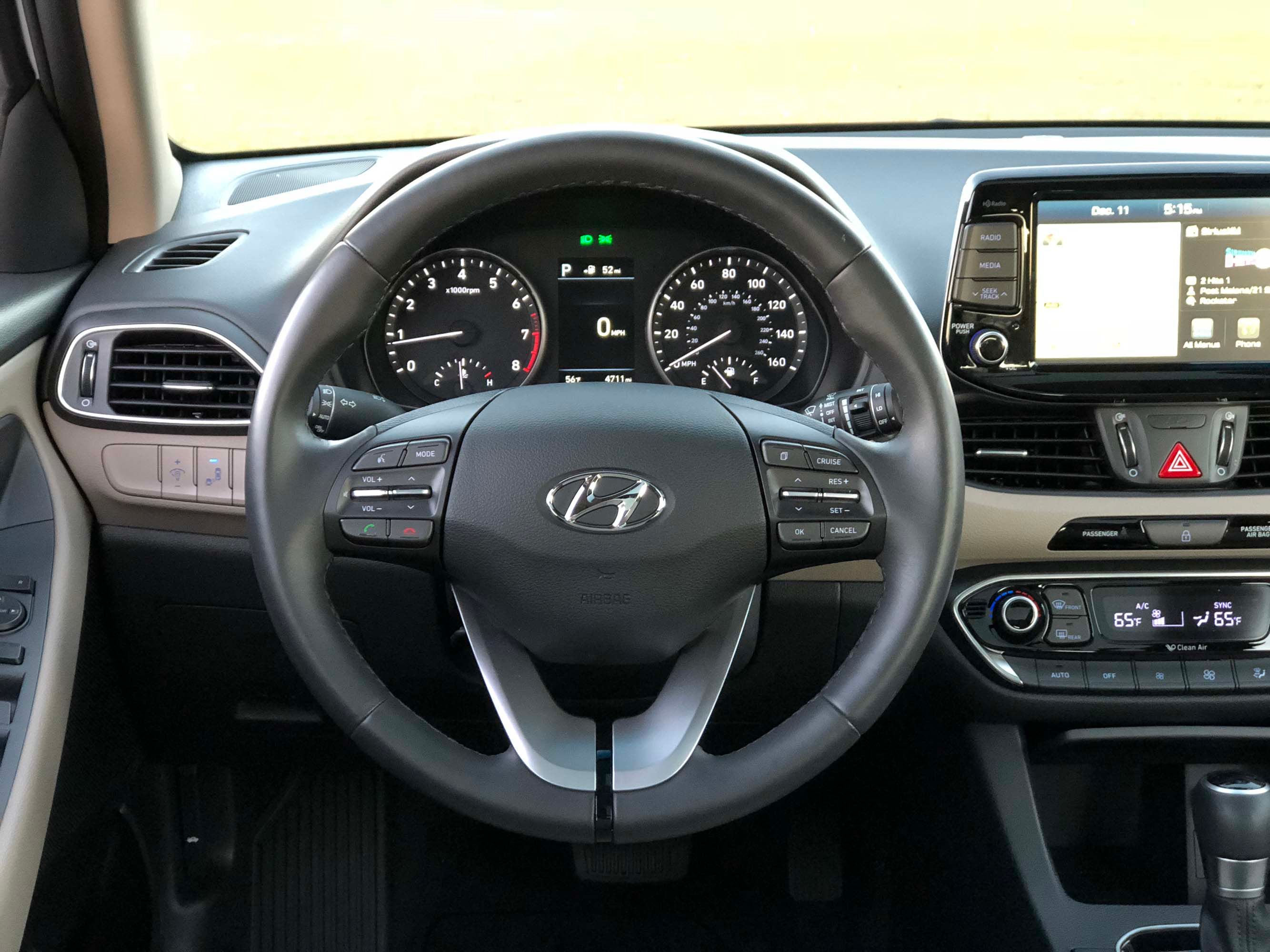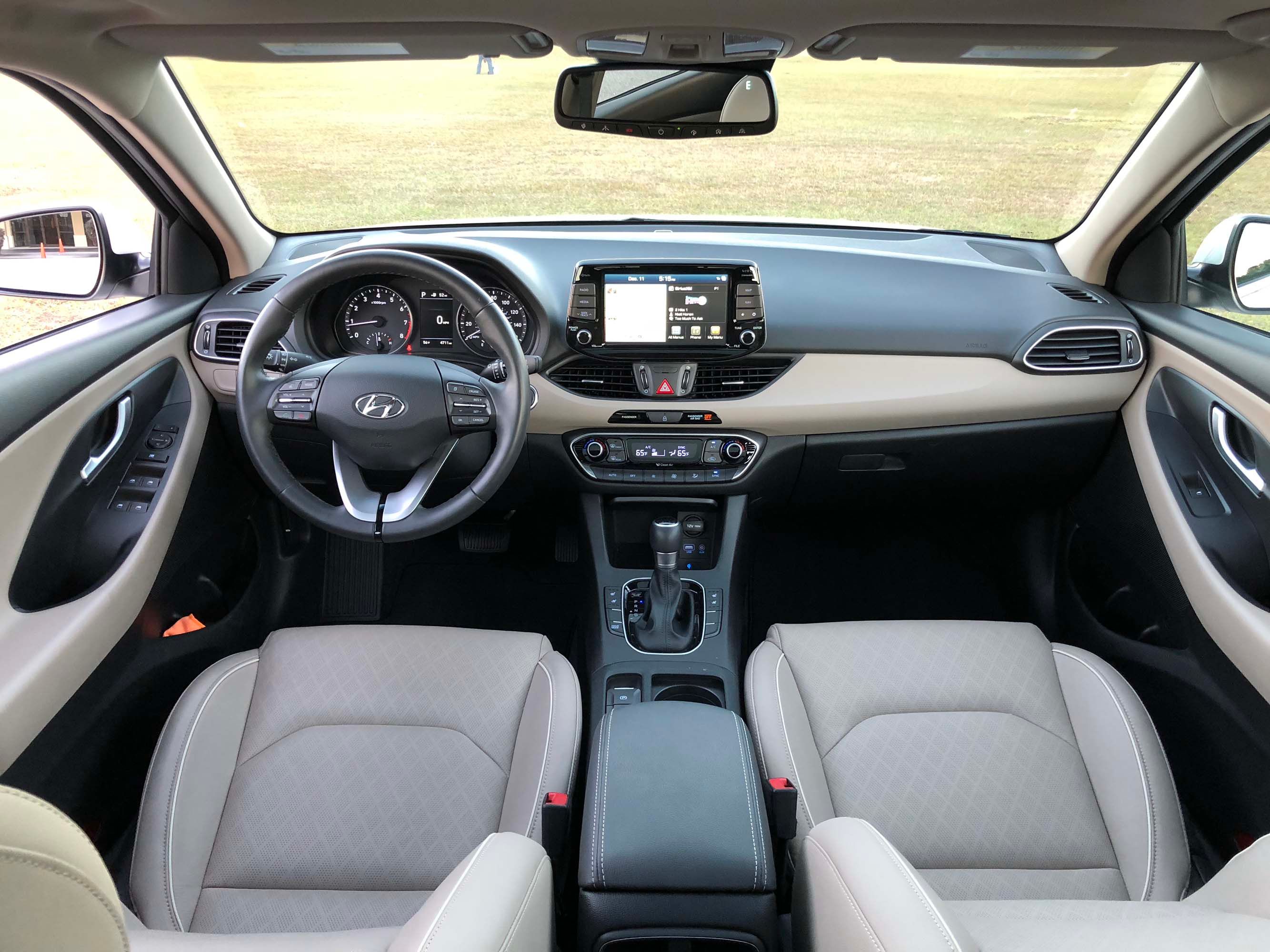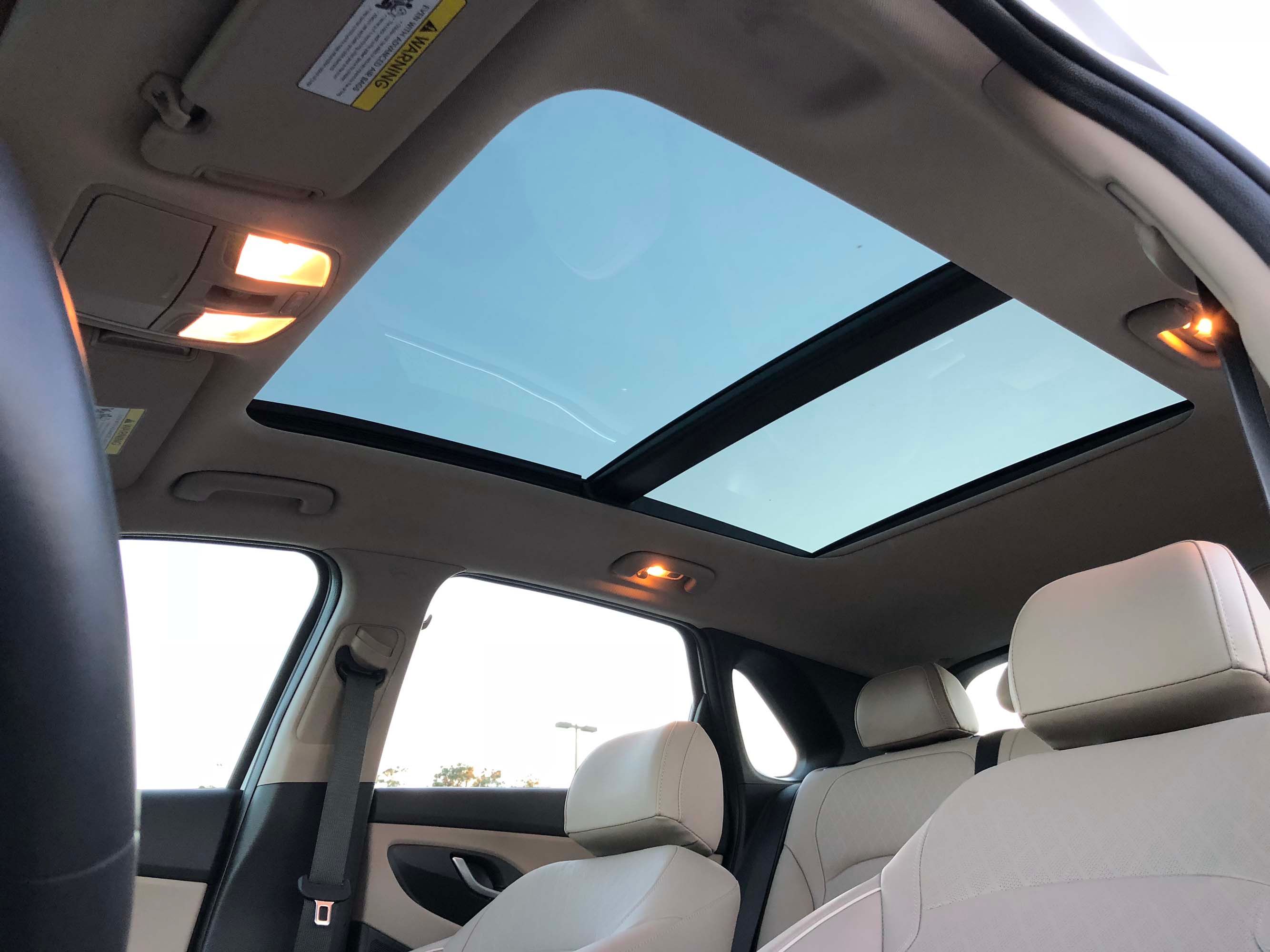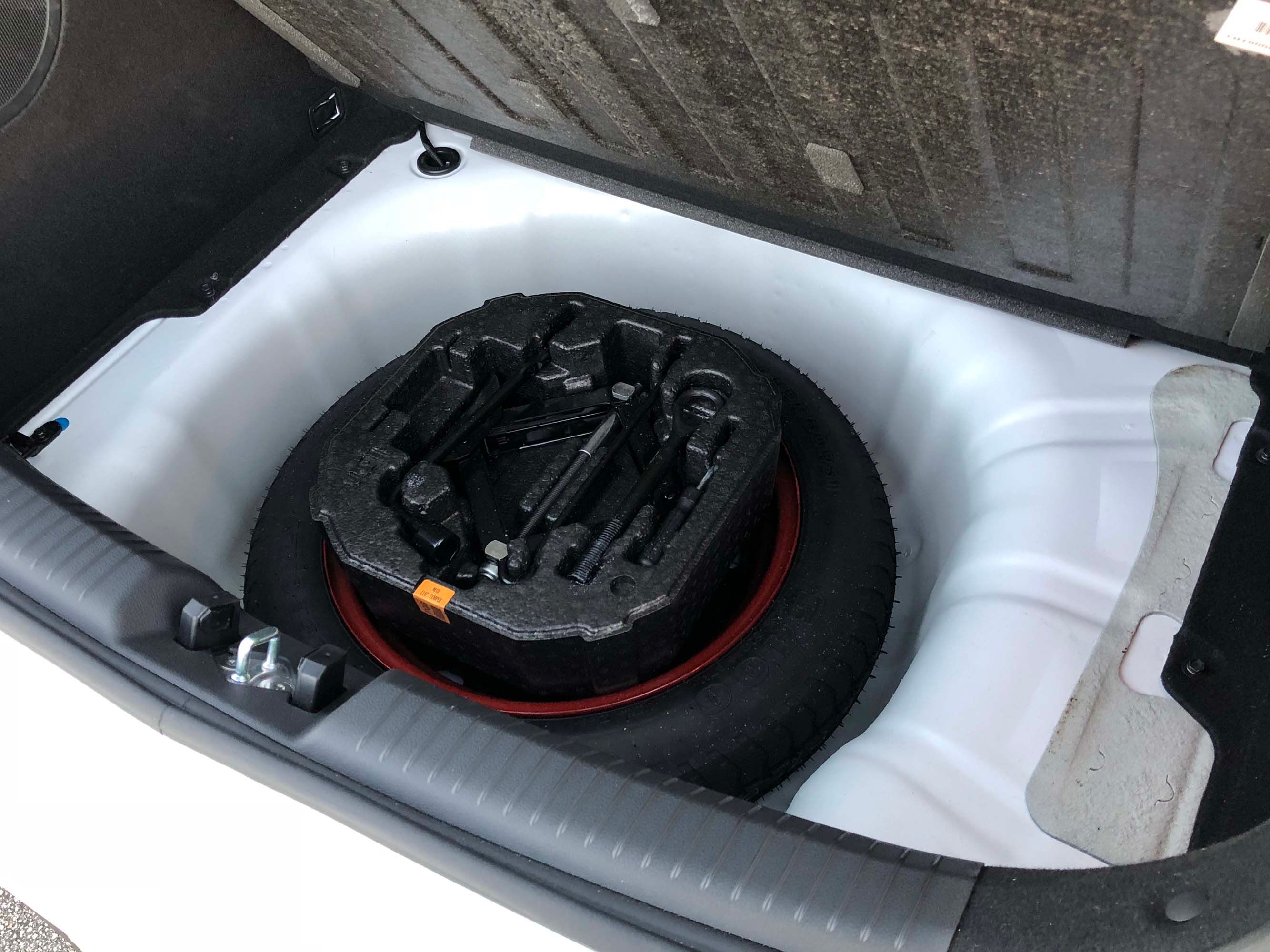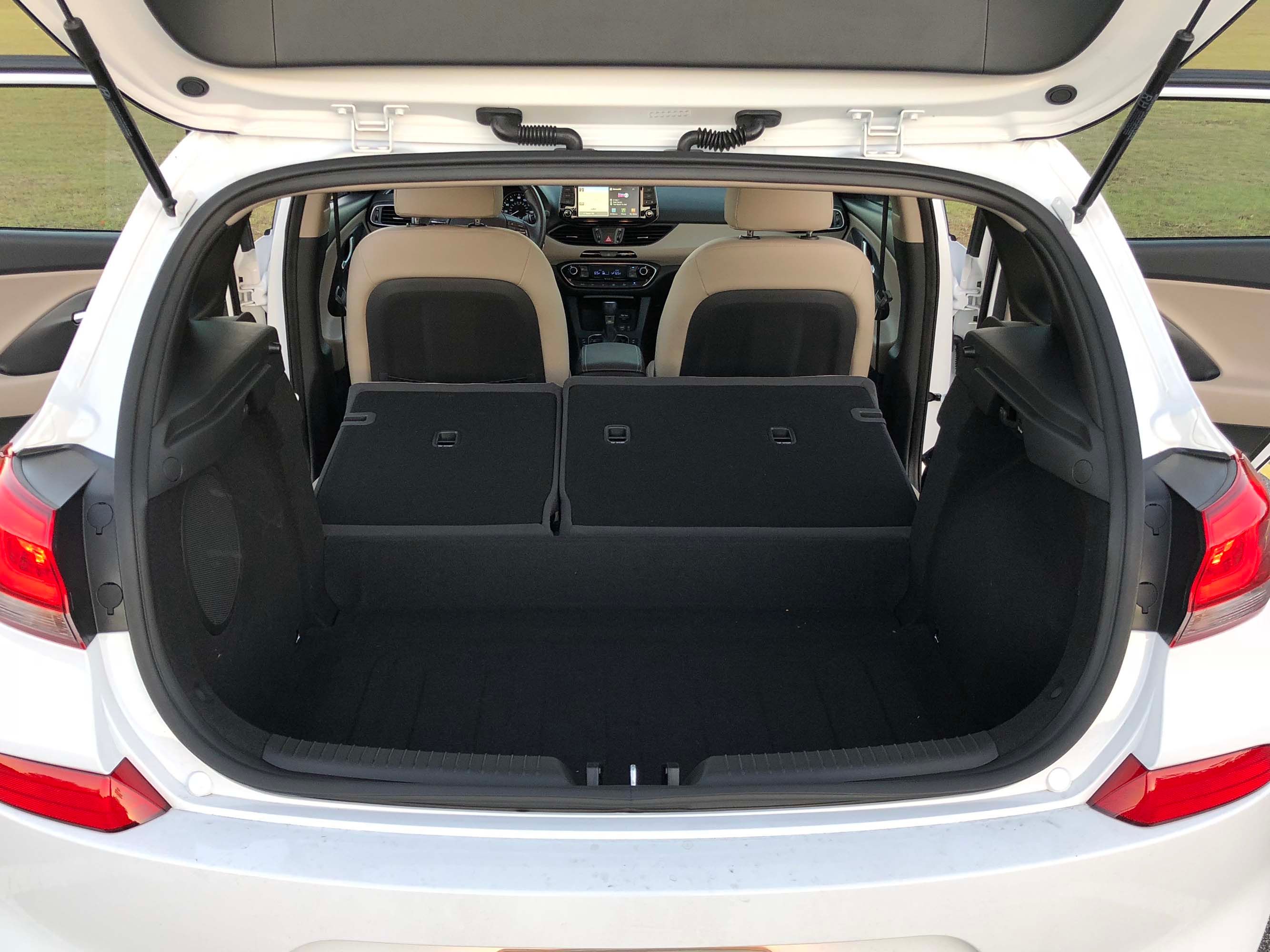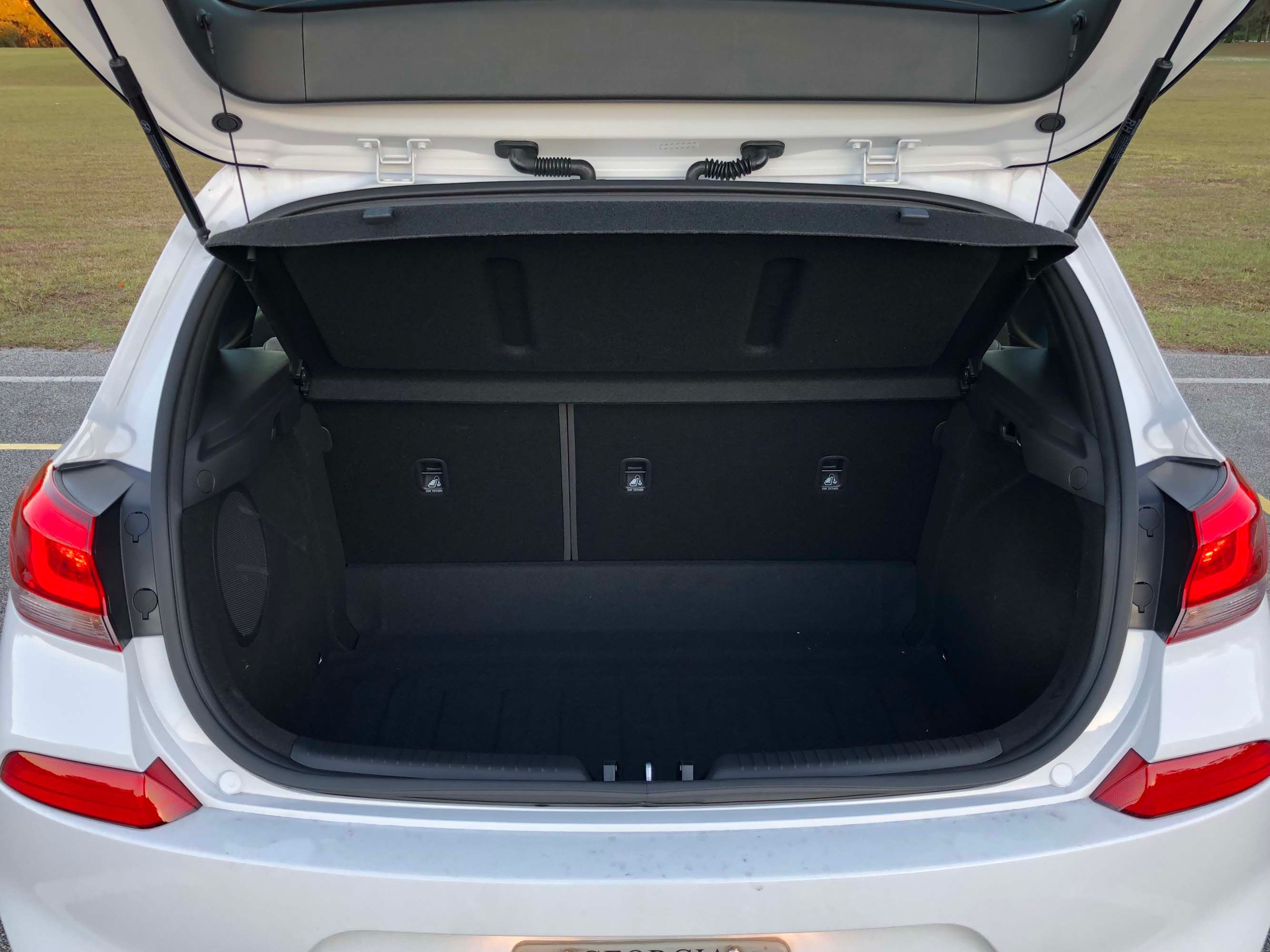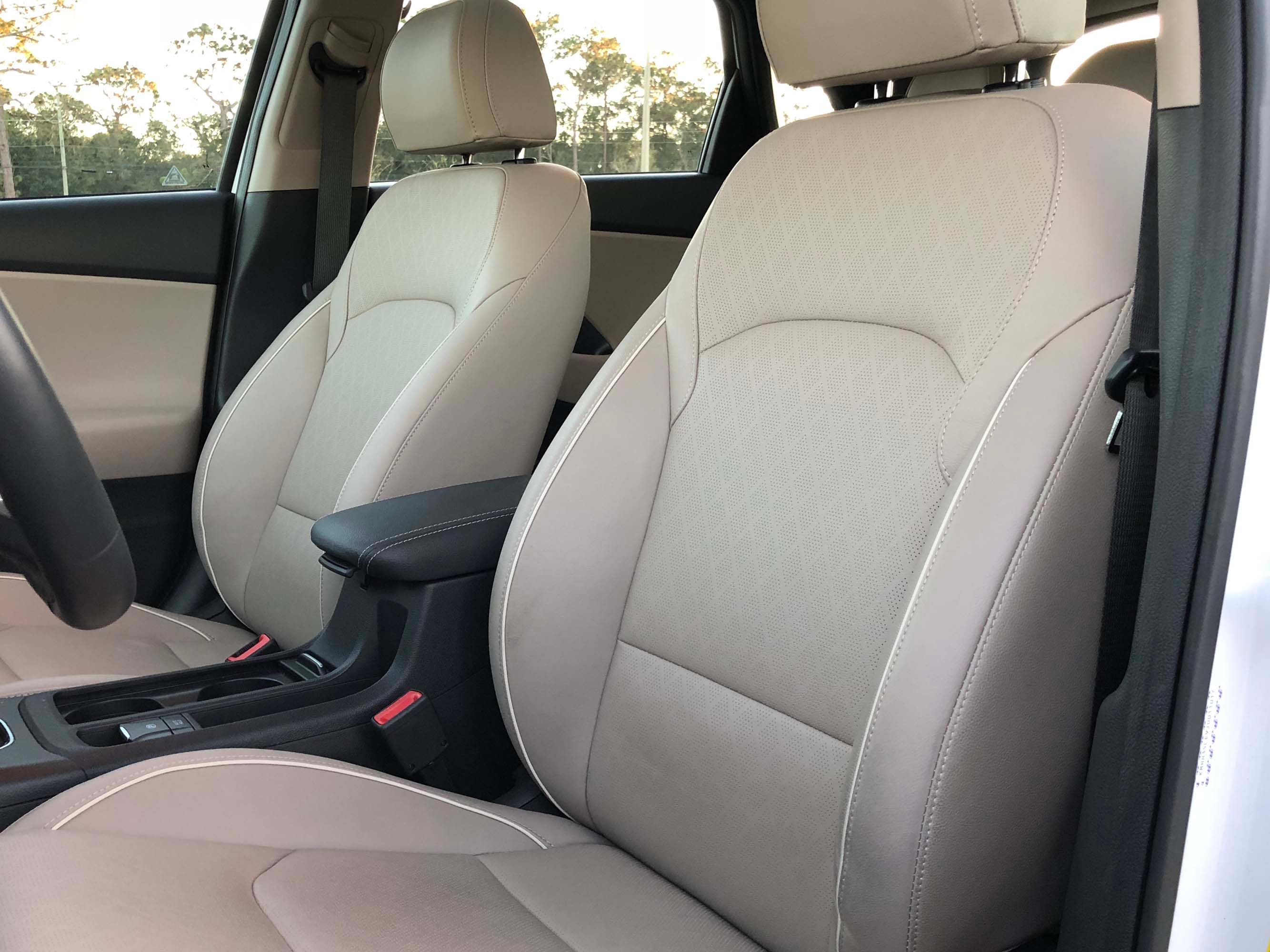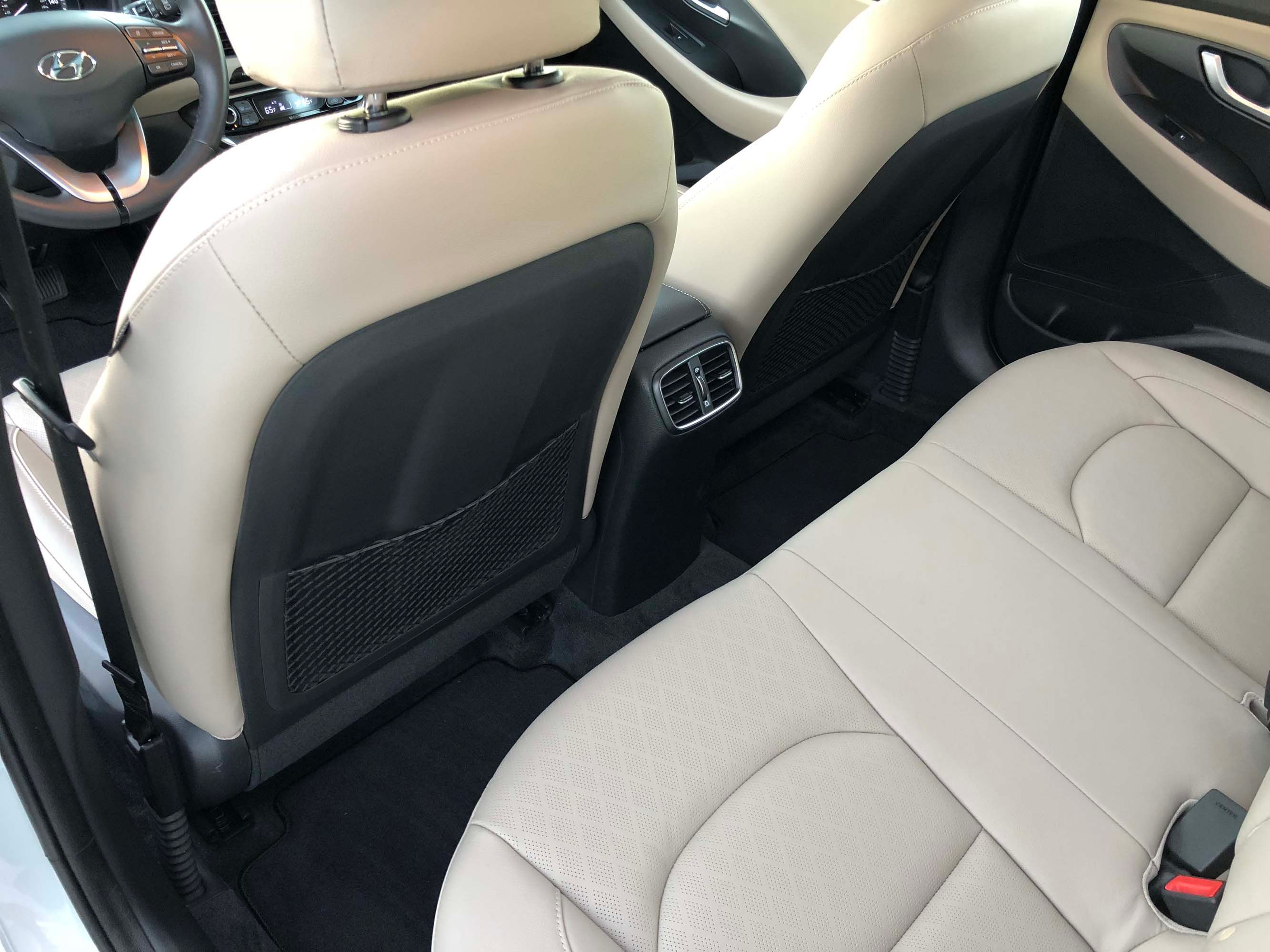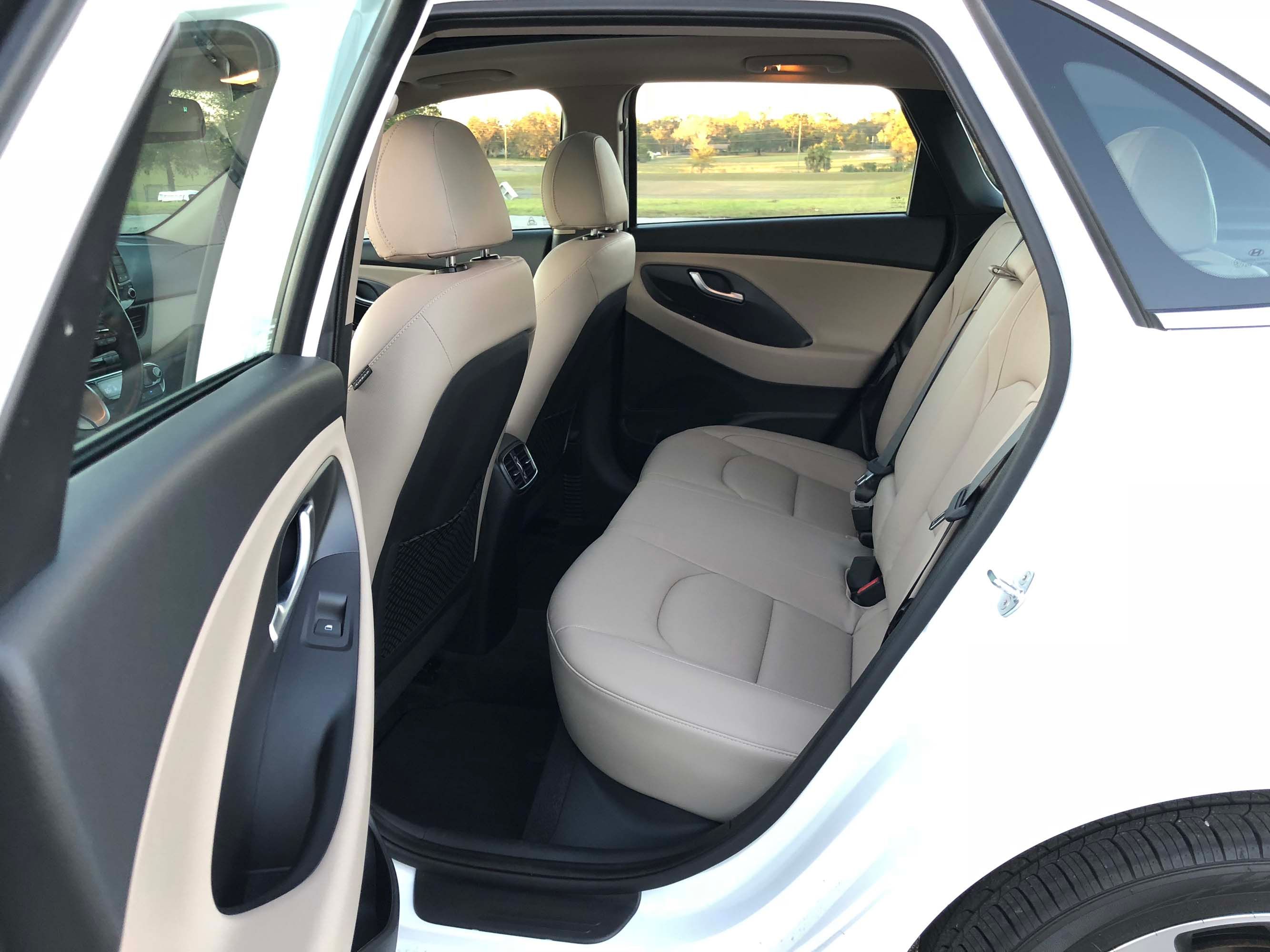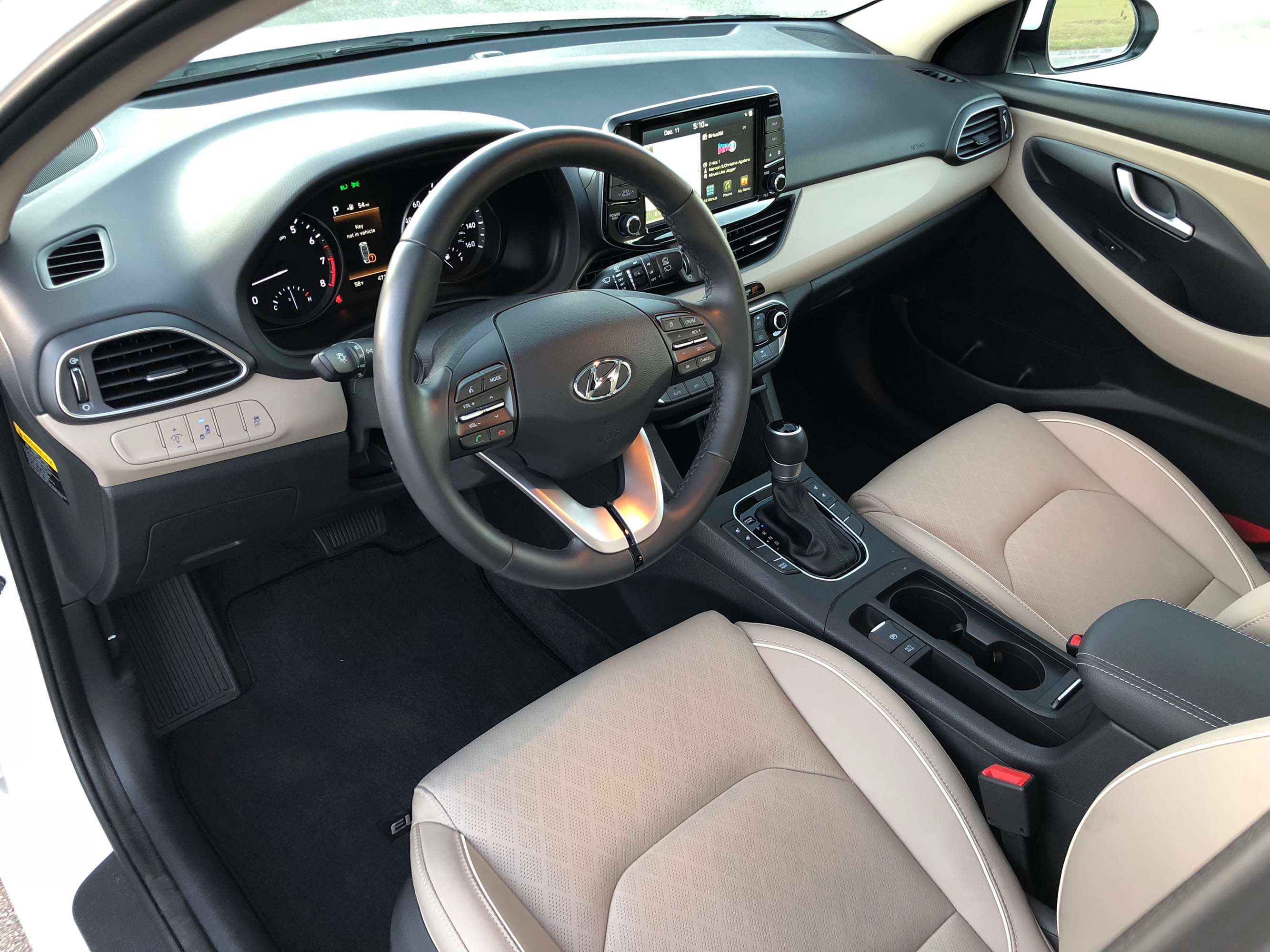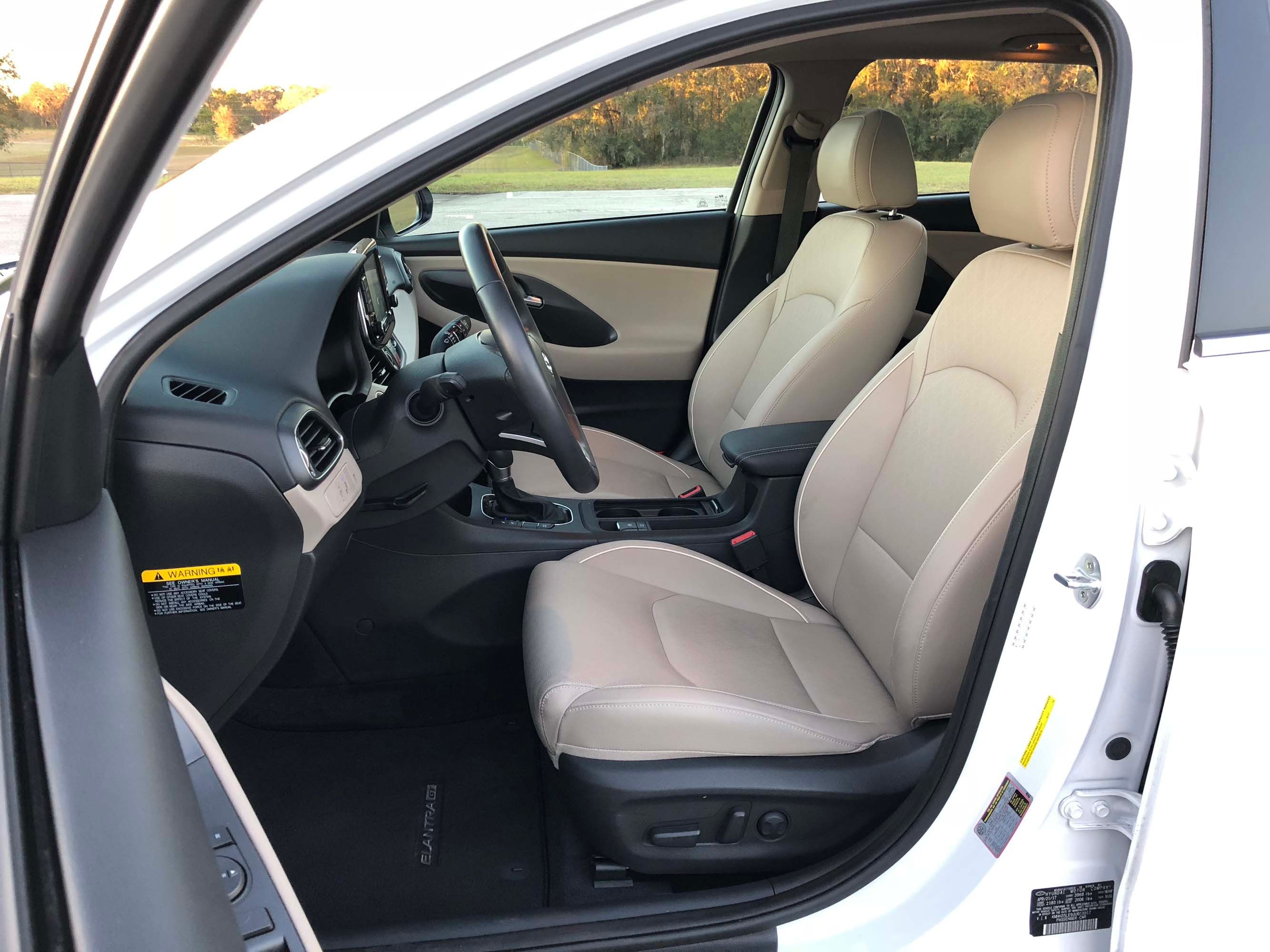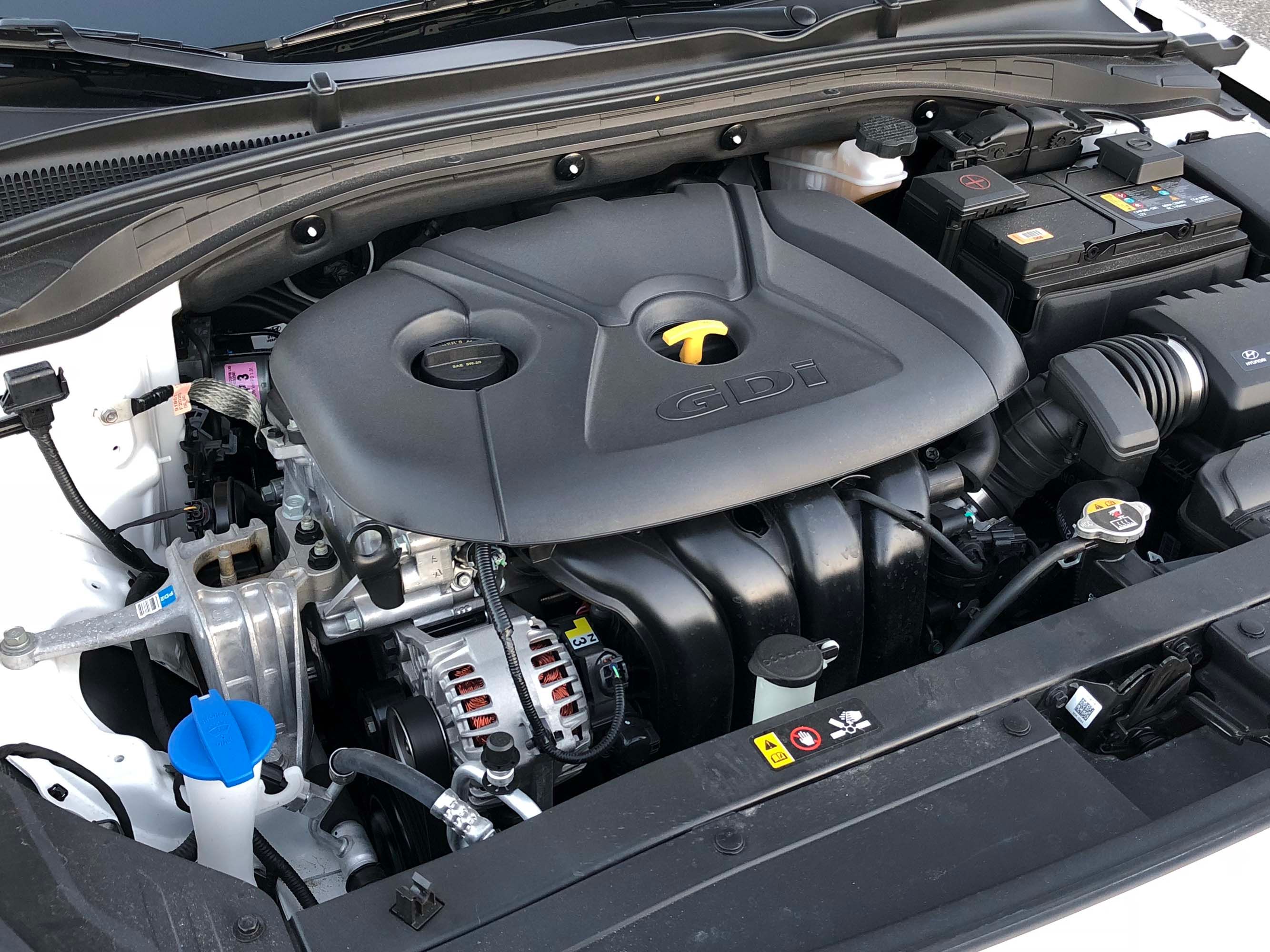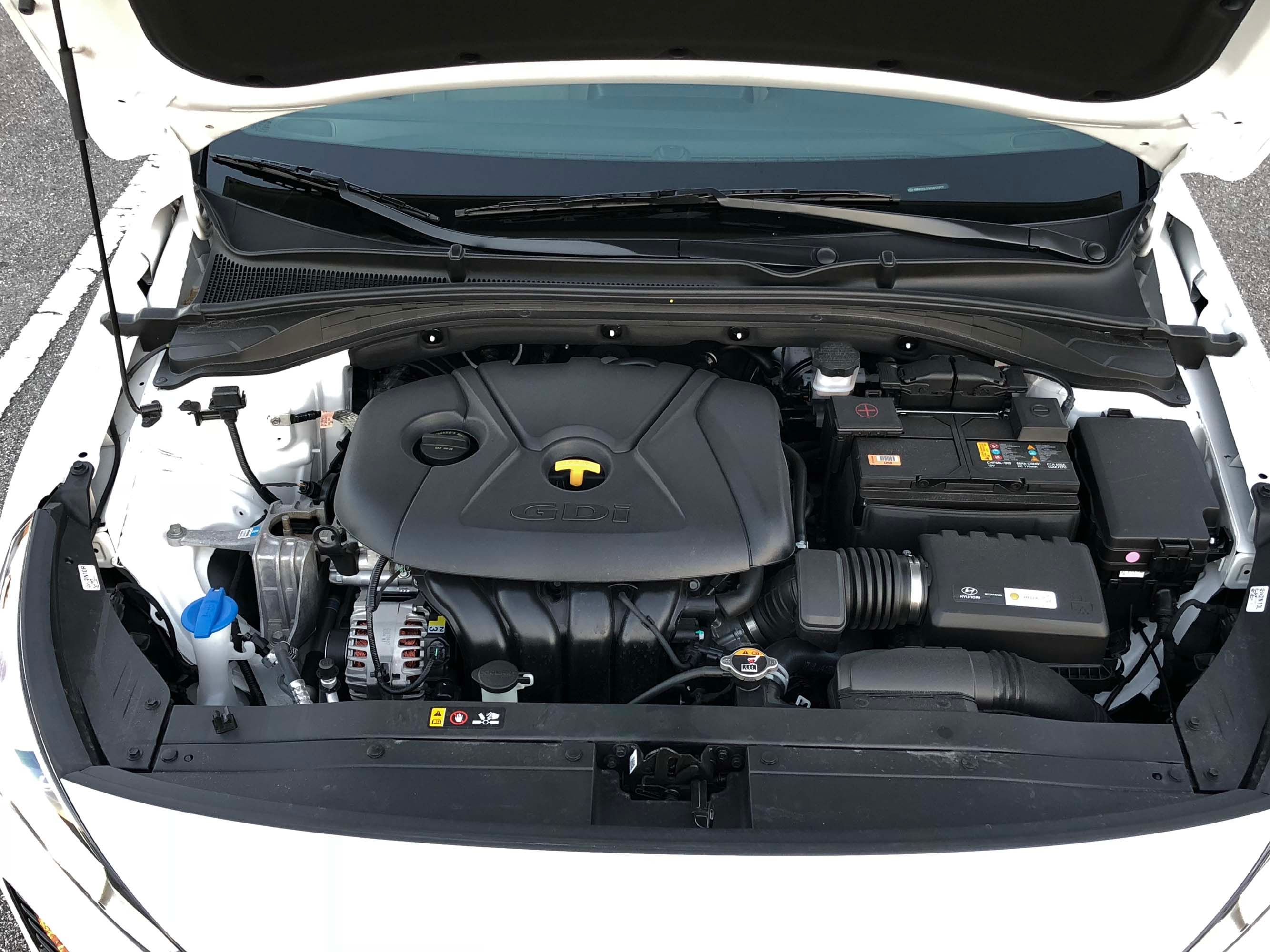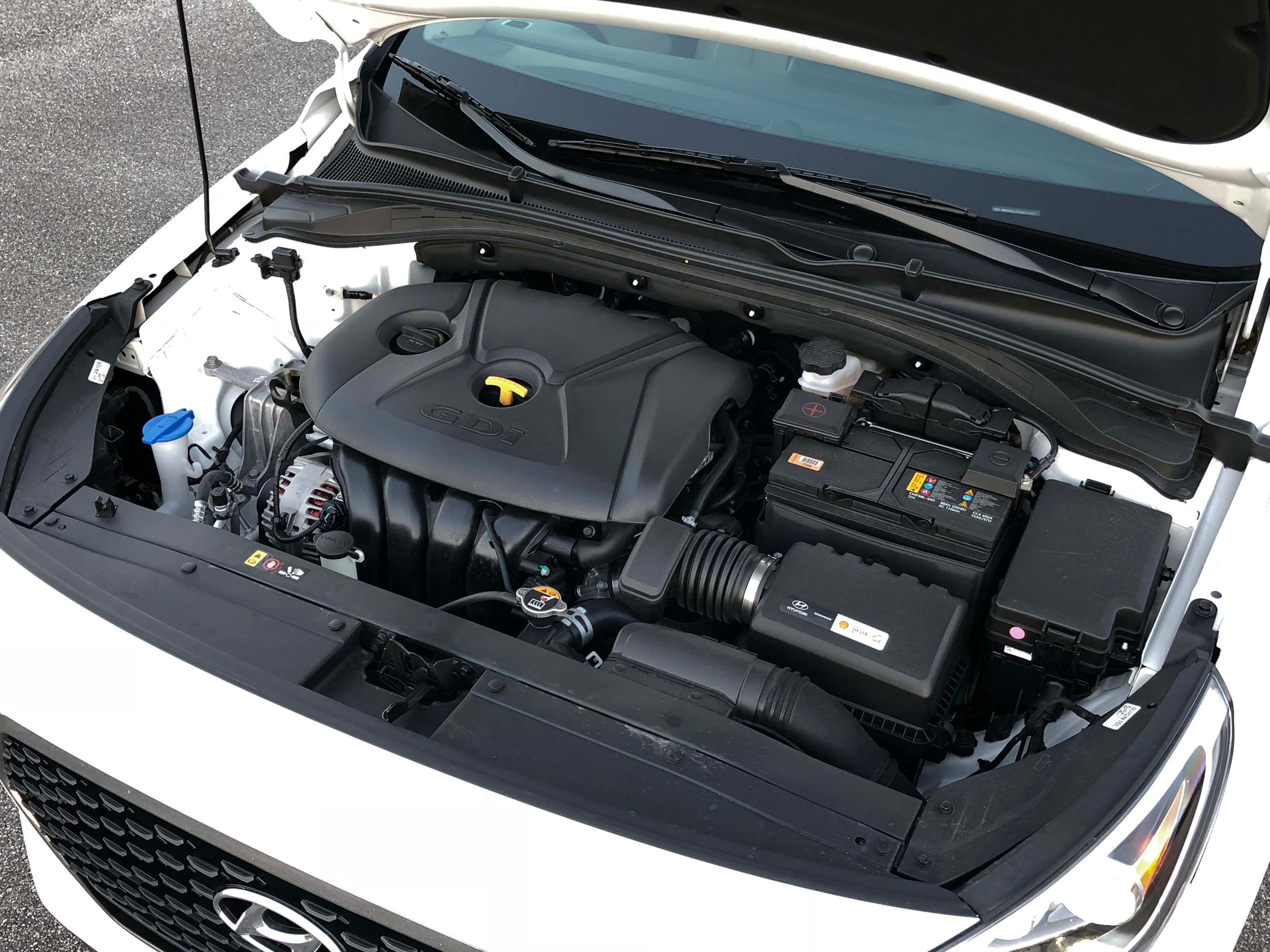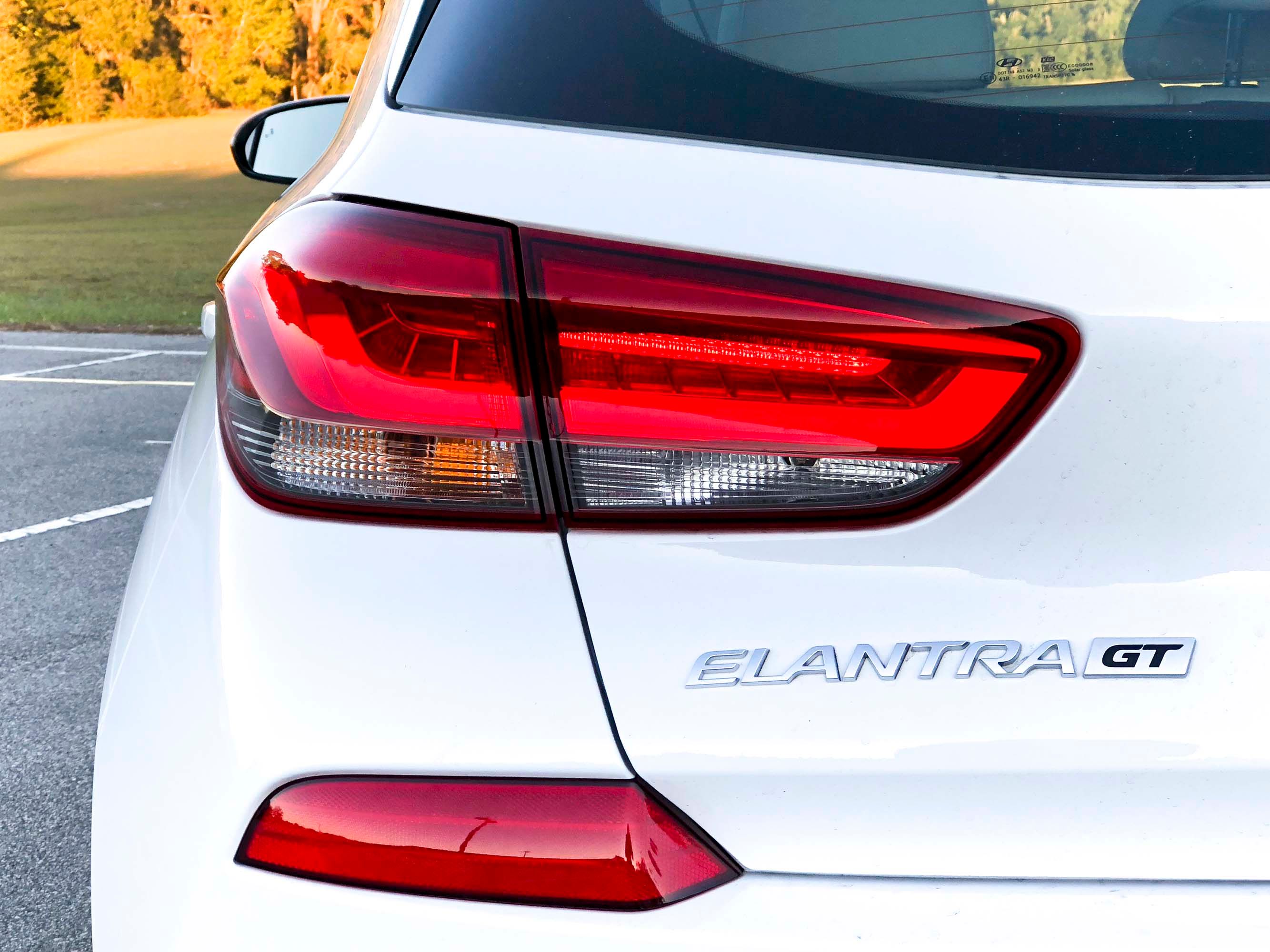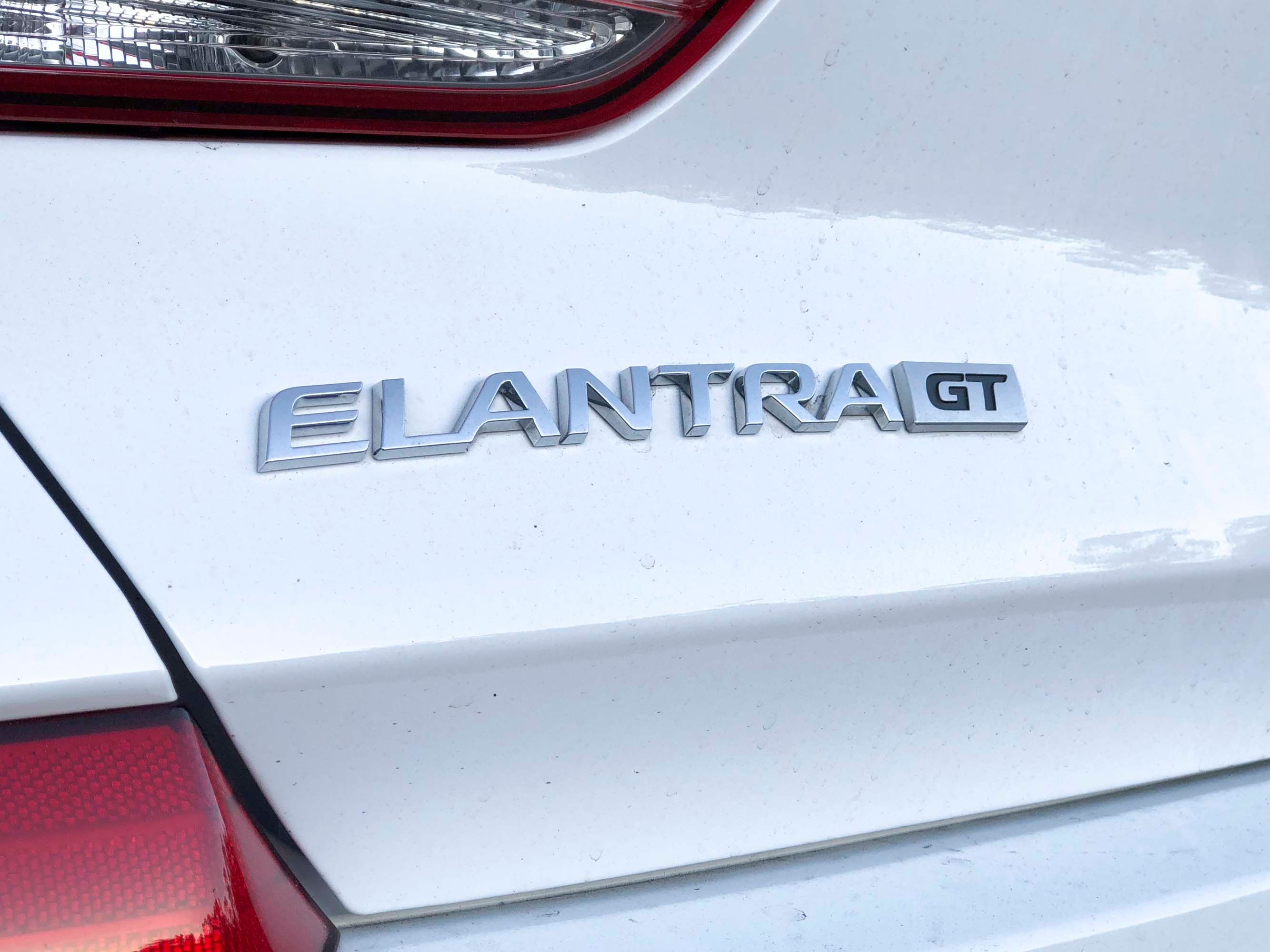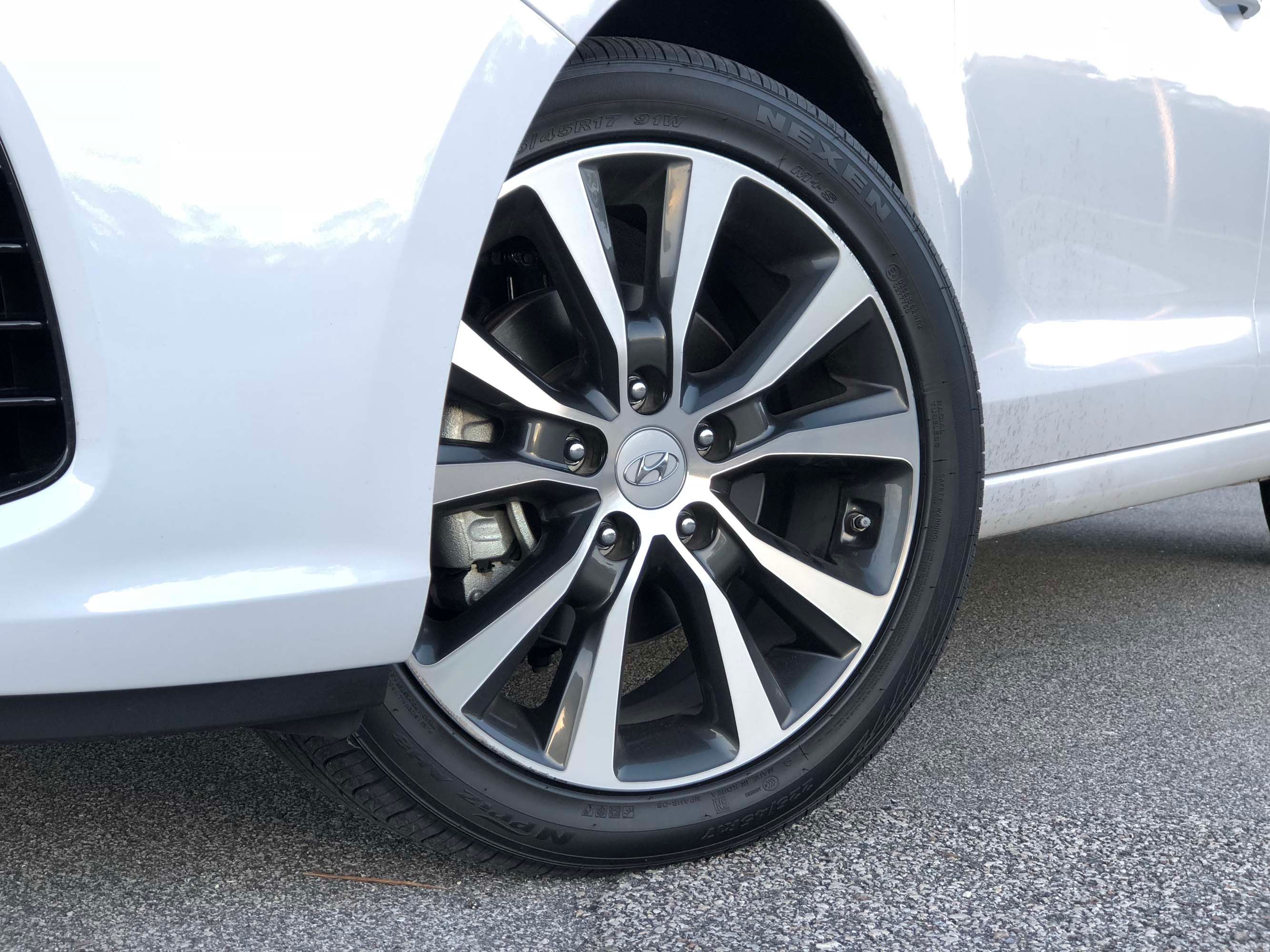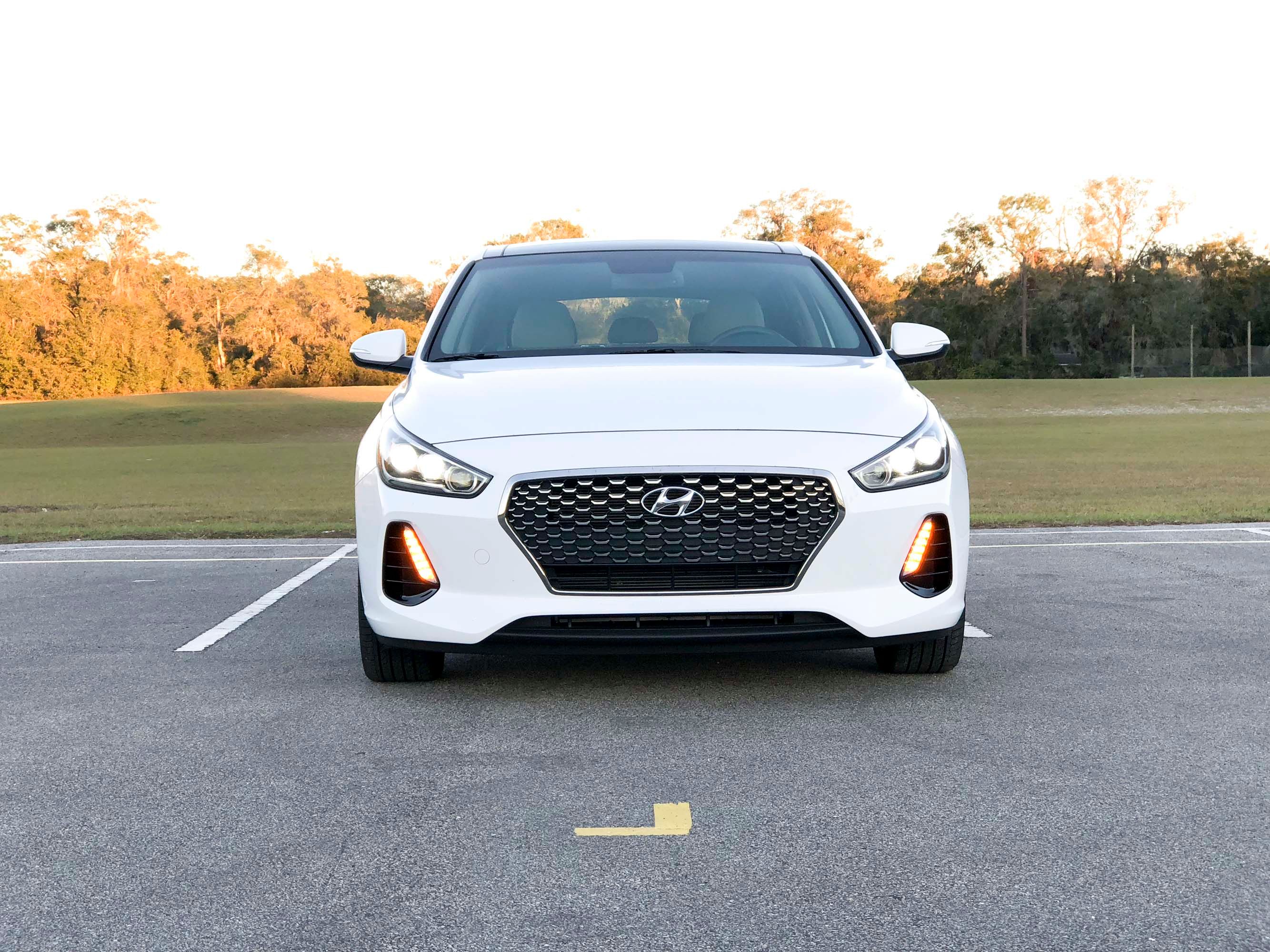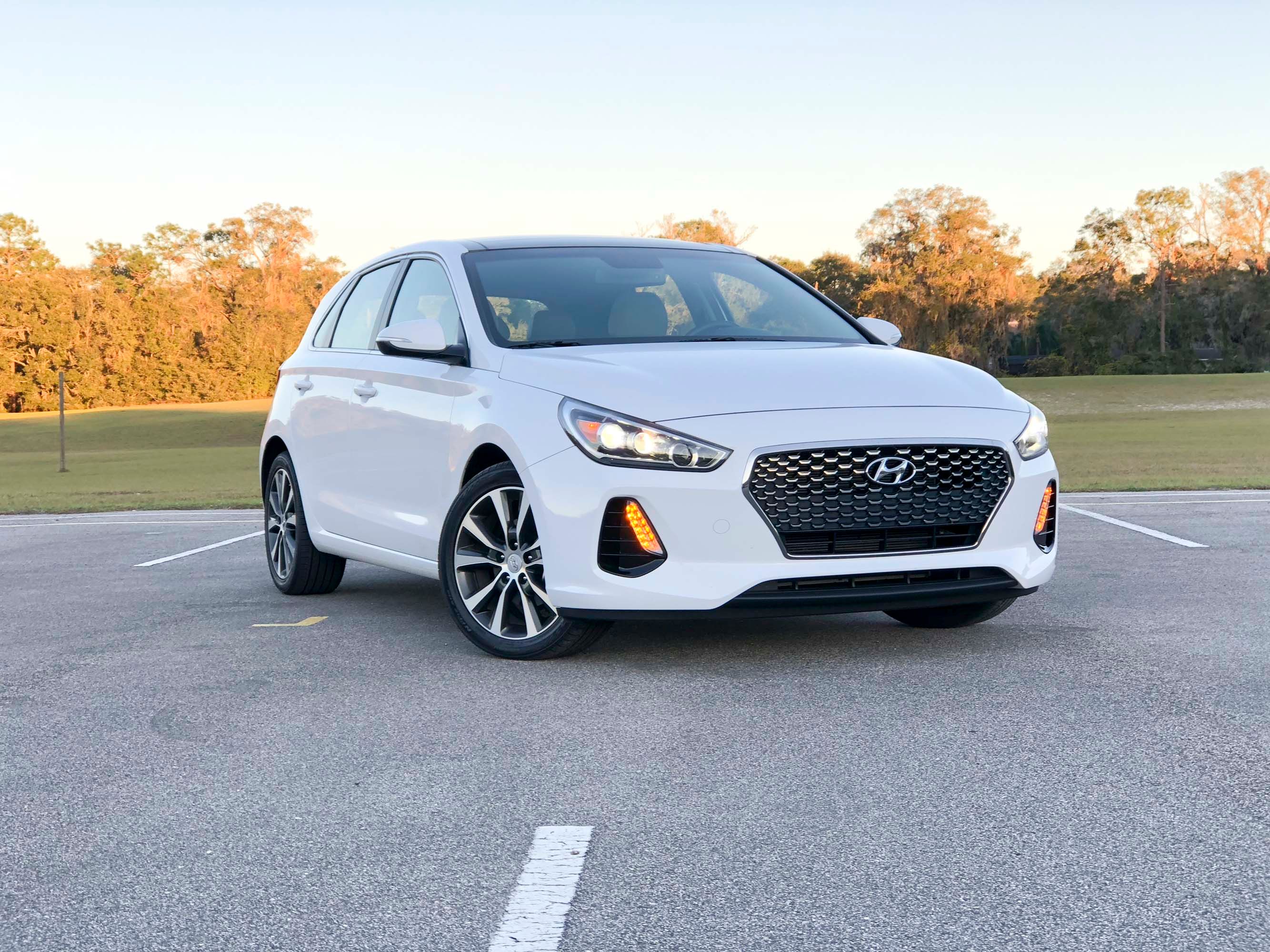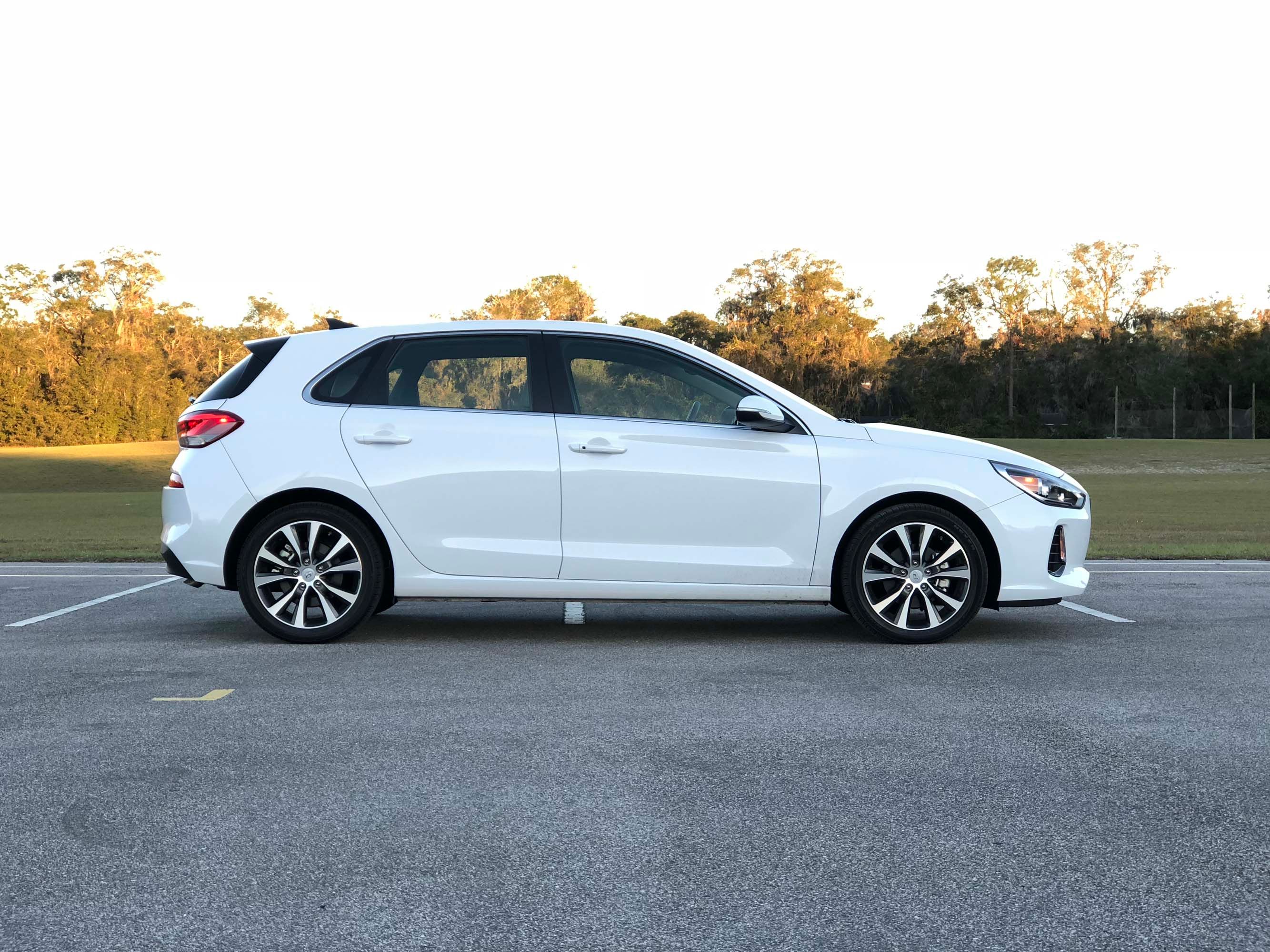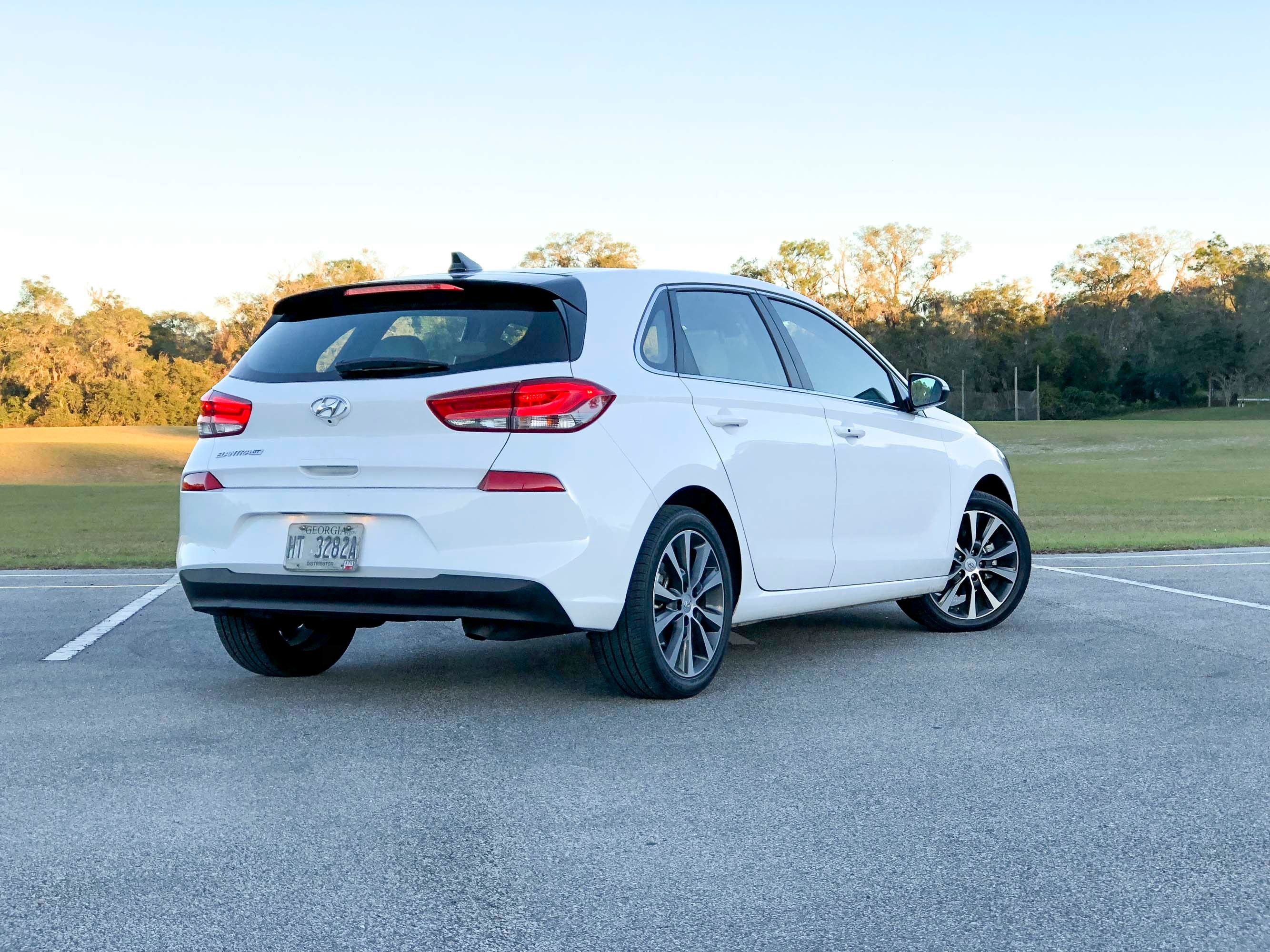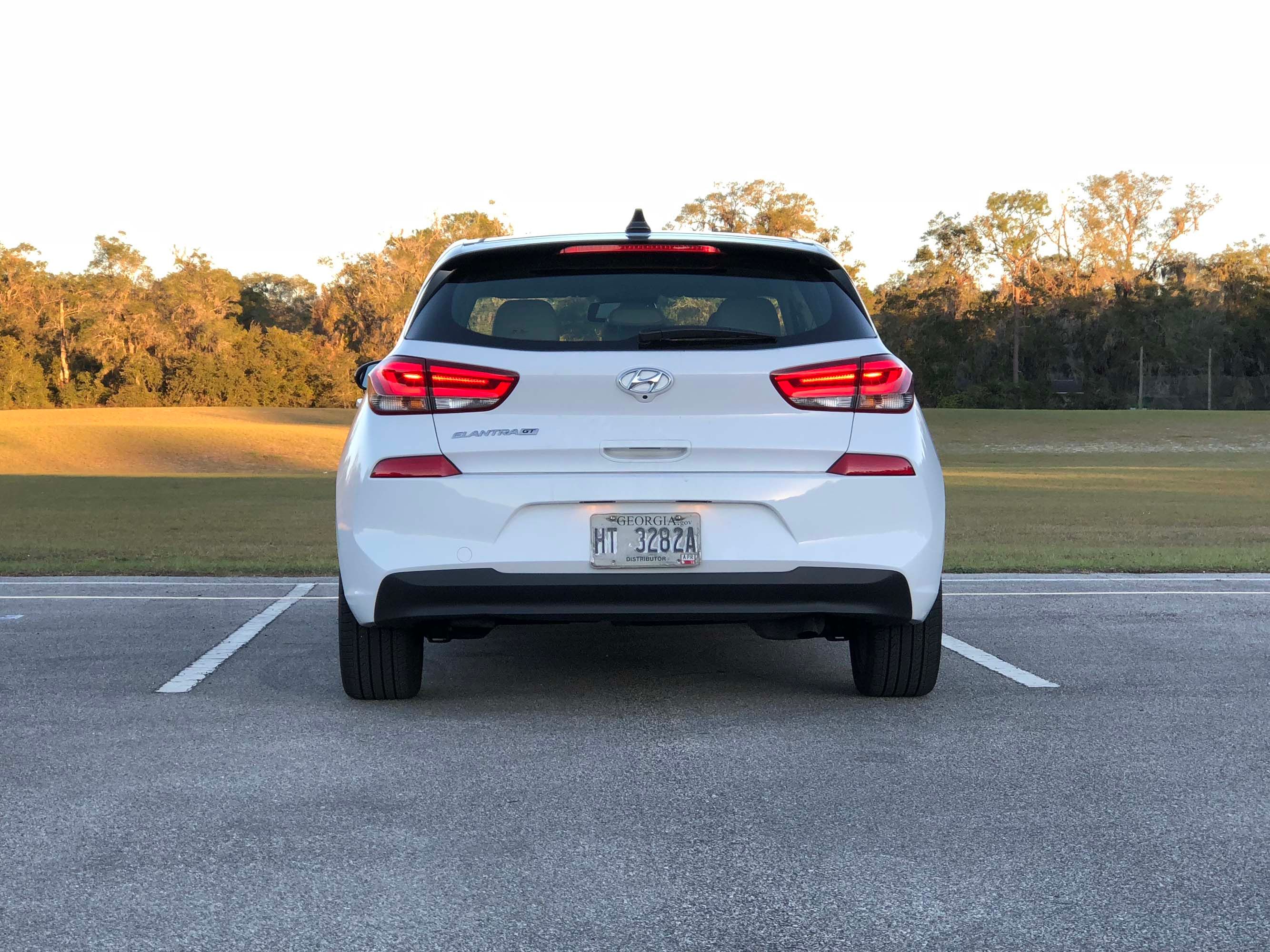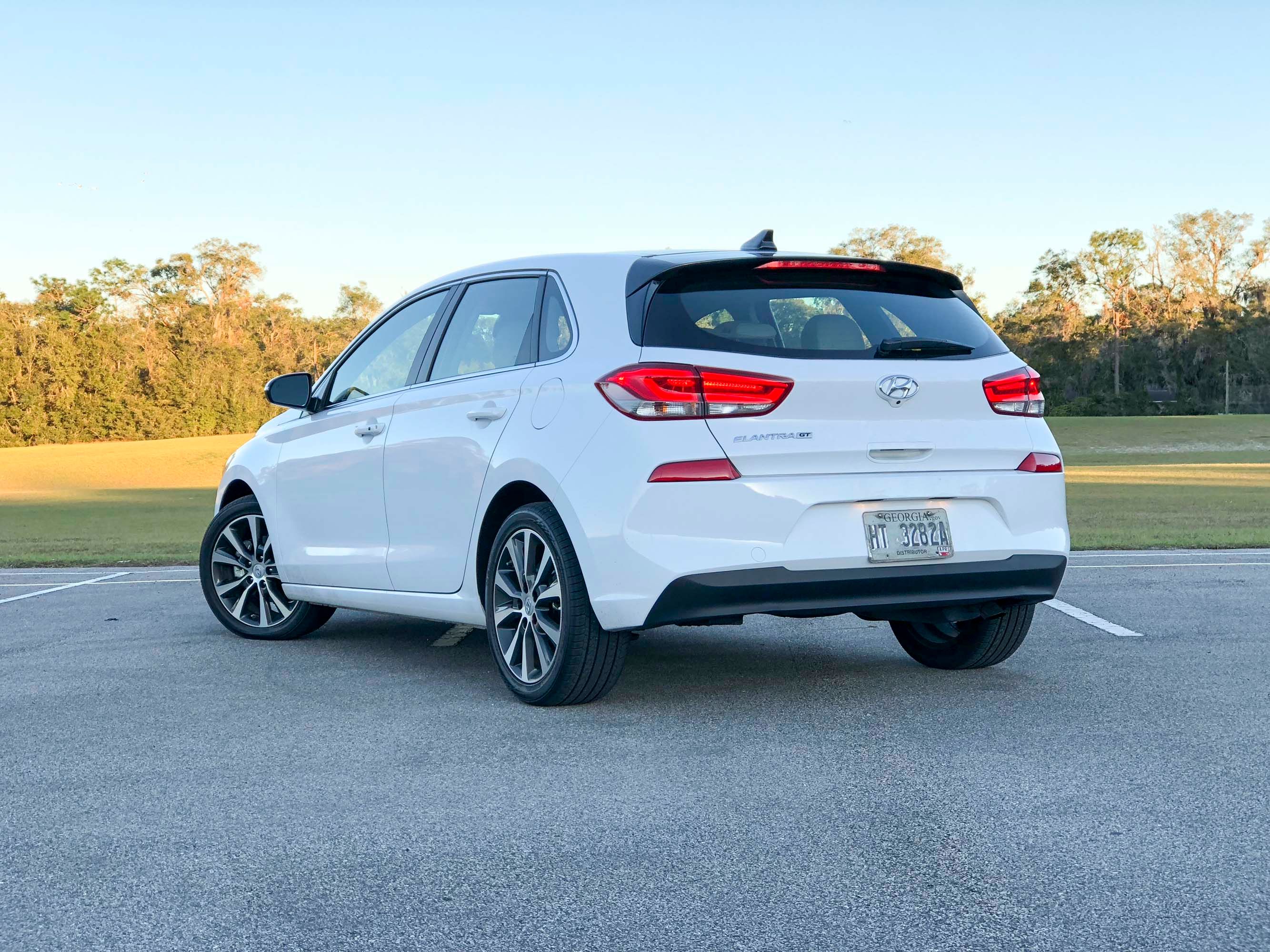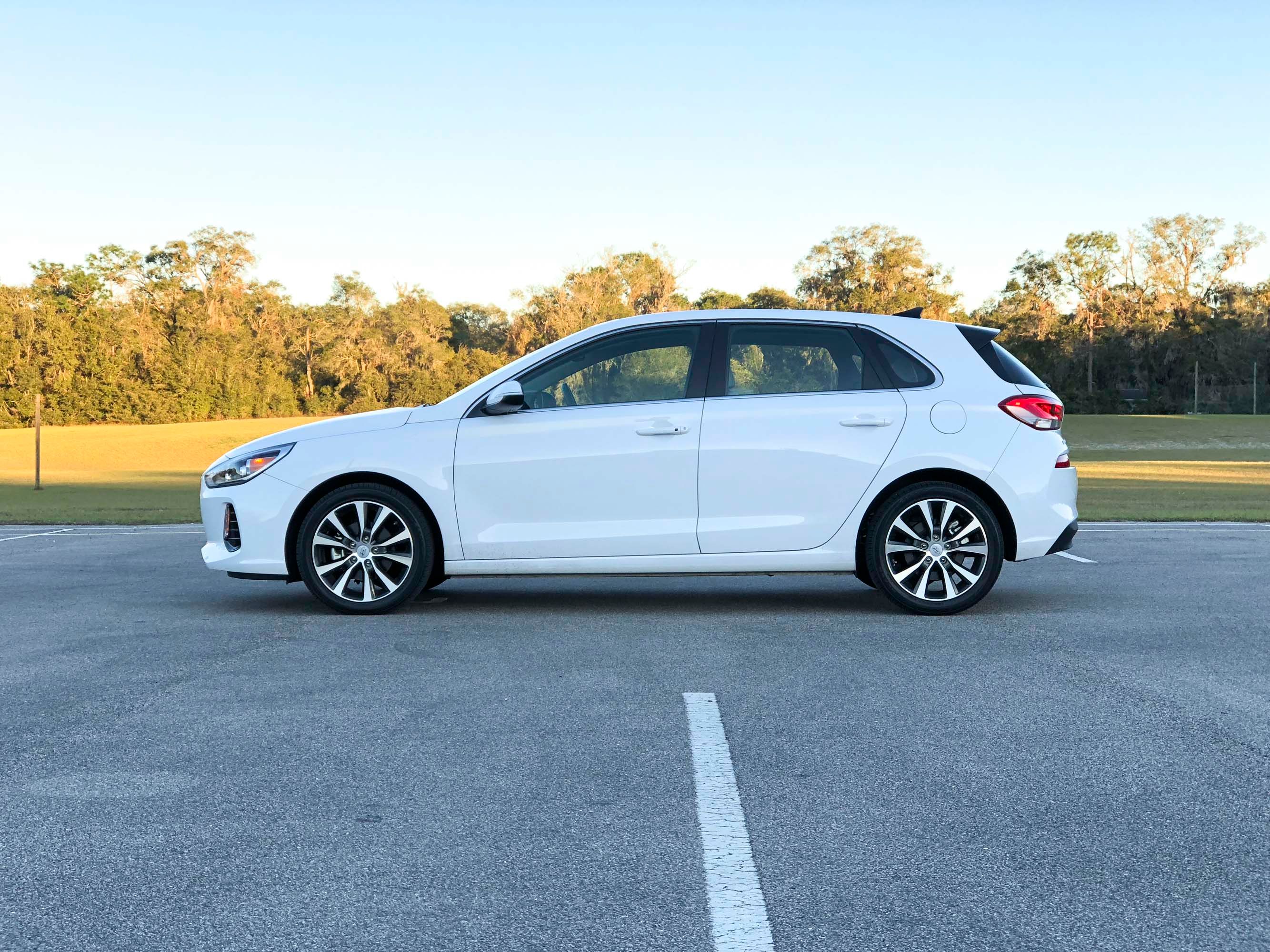The Hyundai Elantra GT is completely new for 2018, bringing with it a very European flair to the longstanding Elantra GT nameplate. But despite its Elantra name, the GT version isn’t a hatchback version of the current Elantra sedan. Rather, the 2018 Elantra GT is a renamed 2018 i30, which is sold around the world. The i30/Elantra GT rides on a shorter wheelbase and have different interior stylings than the Elantra sedan.
So what’s that mean for Hyundai-shopping Americans?
It means the 2018 Elantra GT is a surprisingly classy and solid hatchback. Its fit and finish are impressively upscale, and its long list of features reiterates Hyundai’s value proposition. The GT even does hatchback things well, slotting between the Volkswagen Golf and Honda Civic Hatchback in cargo volume behind the second row. Fold the 60/40-split seats down, and the GT outdoes the competition by no less than two cubic feet.
Keep reading for the specifics and driving impressions of the 2018 Elantra GT.
2018 Hyundai Elantra GT – Driven
- Make: Array
- Model: 2018 Hyundai Elantra GT – Driven
- Engine/Motor: inline-4
- Horsepower: 161 @ 6200
- Torque: 150 @ 4700
- Transmission: 6-speed manual
- [do not use] Vehicle Model: Array
Exterior
Since the 2018 Hyundai Elantra GT is a rebadged Hyundai i30 and not a hatchback version of the Elantra sedan, its styling is unique from the sedan. Here in the States, the differences between the two should be welcomed, though confusion among shoppers could ensue. Still, the Elantra GT is a smooth-looking hatchback thanks to its six-sided grille, projector-beam headlights, and 17-inch alloy wheels.
The classiness continues along the sides thanks to chrome trim around the windows and a distinct crease below the belt line. LED taillights with shapely internal designs, along with the black spoiler atop the hatch, bring an air of sophistication.
My tester came equipped with two big option packages: the Style Package and Tech Package. Despite its name, the Style package adds a laundry list of creature comforts rather than different body panels or interior adornments. On the outside, the changes include side mirror turn signal indicators and a proximity key with buttons on the front doors. The Tech Package adds some items to the exterior, as well. These include the full LED headlights and taillights and massive panoramic moonroof.
In my view, I think the Elantra sedan is a prettier car, but it’s hard to pass on the Elantra GT’s extra interior room and hatchback handiness. Let’s talk about that below.
Exterior Dimensions
|
Hyundai Elantra GT |
|
|
Wheelbase (inches) |
104.3 |
|
Length (inches) |
170.9 |
|
Width (inches) |
70.7 |
|
Height (inches) |
57.7 |
|
Track, Front/Rear (inches) |
61.1/61.5 |
Interior
Of course, interior room and cargo-hauling are what makes a hatchback appealing. The Elantra GT offers an impressive 25 cubic feet of cargo volume behind the second row, meaning a family with two kids should be able to fit a week’s worth of luggage. When it comes time to hauling home IKEA treasures, the 60/40-split second row folds flat for a whopping 55 cubic feet of cargo volume. That’s more than some compact crossovers. It’s also more than the Honda Civic Hatchback (46 cubic feet) and VW Golf (53 cubic feet).
The Civic Hatch does provide more cargo room behind the second row, however, out-classing the Elantra GT with 26 cubic feet. The VW Golf can only hold 23 cubic feet, however. So, in terms of cargo space, the Hyundai is very competitive.
As for rear seat comfort, things are surprising. Even full-size adults should feel at home back here thanks to a decent amount of legroom at 34.8 inches and generous levels of headroom of 38.5 inches. A folding center armrest makes elbows happy and two HVAC vents keep temperatures in check.
Speaking of temperatures, the Style Package brings dual automatic temperature controls with an automatic defogger. That means the front seat occupants can choose their own temperatures and the car helps choose the best setting for clearing a foggy windshield.
Front occupants will also love the Style Package’s heated seats and the Tech Package’s vented seats. Paired together, the Elantra GT’s front seats will both cool and warm your buns. Adding the Tech Package also brings leather seats and the nifty 8.0-inch infotainment screen with navigation, Apple CarPlay, and Android Auto. Hyundai’s Blue Link Connected Services is included with the system, bringing free remote start and software updates for three years. A seven-speaker sound system from Infinity accompanies the updated infotainment system, as well. Last but not least, the Style Package includes a power-operated driver’s seat.
Interior Dimensions
|
Hyundai Elantra GT |
|
|
Hyundai Elantra GT |
39.1/38.5 |
|
Headroom, front/rear (inches) |
42.2/34.8 |
|
Leg Room, front/rear (inches) |
56.2/55.4 |
|
Shoulder Room, front/rear (inches) |
24.9/55.1 |
|
Cargo volume seats up/down (cu ft) |
95.5 |
|
Passenger Volume (cu ft) |
121.4 |
Drivetrain
While the 2018 Elantra GT can be had in the Sport trim with the peppy 1.6-liter turbo-four with 201 horsepower and 195 pound-feet of torque mated to either a six-speed manual or seven-speed dual-clutch automatic, the non-Sport trim gets a more economical powertrain.
My tester came with the standard 2.0-liter four-cylinder making a naturally aspirated 161 horsepower at 6,200 rpm and 150 pound-feet of torque at 4,700 rpm. While a six-speed manual transmission is standard, too, most Elantra GTs will likely come with the six-speed automatic transmission, just as mine did. All Elantra GTs are front-wheel drive with no option of AWD.
While horsepower and torque figures are a bit conservative, the flip side is respectable fuel economy. The EPA estimates the 2.0-liter/six-speed auto combination to achieve 24 mpg city, 32 mpg highway, and 27 mpg combined. Regular unleaded is all that’s required, as well.
Suspension wise, the Elantra GT uses MacPherson struts up front with a Torsion axle and coil springs in back. The resulting ride is smooth and compliant over most road surfaces. Opting for the Elantra GT Sport – just like on the Elantra Sport sedan – brings an entirely different rear suspension system. The Sport gets an upgraded multi-link independent rear suspension that’s better at handling aggressive driving.
|
Hyundai Elantra GT |
Hyundai Elantra GT Sport |
|
|
Type |
DOHC D-CVVT (Dual Continuously Variable Valve Timing) |
DOHCD-CVVT (Dual Continuously Variable Valve Timing) |
|
Materials |
Aluminum block and head |
Aluminum block and head |
|
Displacement |
2.0-liter / 1,999 cc |
1.6-liter Turbo / 1,591 cc |
|
Horsepower (estimated) |
161 HP @ 6,200 RPM |
201 HP @ 6,000 RPM |
|
Torque (estimated) |
150 LB-FT @ 4,700 RPM |
195 LB-FT @ 1500-4500 RPM |
|
Transmission |
6-speed manual |
6-speed manual |
|
Curb weight (Lbs) |
2,901-2,989 |
3,014-3,102 |
Behind The Wheel
Though it wasn’t the Sport model, my Elantra GT tester felt poised in every situation I put it through. Of course, I didn’t find myself at the drag strip or autocross circuit, but on average streets and driving like an average person. Power wise, the Elantra GT’s 161 horsepower is more than adequate. Peak horsepower lives in the engine’s stratosphere, but the 2.0-liter is more than happy to soar. Better still, the torque curve feels flat, despite peak torque coming on at 4,700 rpm.
The transmission provided smooth shifts and never really called attention to itself. Manual shifts via the gated shifter take longer than they should, spoiling any intentions of spirited driving. Paddle shifters can’t be had here.
As mentioned, the suspension does a good job at soaking up bumps for its class. Body roll is present but is kept to a minimum unless pushed hard. The steering feels direct, as well, and has very little on-center vagueness. That’s thanks to Hyundai’s motor-driven power steering system.
The throttle and braking inputs are also commendable. There is no throttle tip-in that attempts to make the car feel quicker than it is, but rather, it’s a pedal feel with a smooth and linear progression throughout its travel. The brakes offer a decent bite once hard on the pedal, but there is no initial grabbiness, which can lead to a jerky driving experience. In general, the Elantra GT is a smooth car to drive.
Things are perfect, though. Road noise, especially on rougher pavement, is pronounced. Whether it is Hyundai’s choice in tires or the lack of sound insulation material, the GT is just a bit rumbly.
Pricing
A big part of Hyundai’s appeal is its cost-effeteness as a brand. The 2018 Elantra GT stays true to the mission by starting at $19,350. Those wanting the six-speed automatic transmission will have to pay $1,000 more. The six color choices are all cost-free. The same is true for the two-tone black and beige interior offered with a few of the exterior colors.
The only major choices are the Style Package and Tech Package. While they add a bevy of really handy creature comforts, they do rack up the price. The Style Package costs $1,800 and the Tech Package adds a whopping $4,300. The only other optional equipment are dealership add-on items like floor mats, cargo nets, wheel locks, and other similar items.
Still, even with both the Style and Tech packages added, the Elantra GT is reasonably priced.
The Competition
2017 Honda Civic Hatchback
The 10th generation Civic has been around since 2015, but the hatchback just joined the fray in 2017. Still, the newest iteration of the Honda hatch offers all the engineering and design elements that make the Civic sedan so good, but with tons more room for cargo. There is 25.7 cubic feet behind the second row and 46.2 cubic feet with the seats folded. Up front, the dash is logically arranged with easy-to-operate controls. The semi-digital gauge cluster adds an air of sportiness, while the infotainment system offers a fairly intuitive interface. I’m not a fan of the HVAC fan speed and ancillary controls being buried under the “Climate” button. In theory, it works, but a slow load time makes for a few grueling seconds of heat or cold when starting the car. Thankfully the dual-zone temperature knobs are easy to use. It’s also too bad the radio doesn’t have knobs, either.
Under the hood of the standard Civic Hatch is Honda’s new 1.5-liter turbocharged four-cylinder. The engine makes 180 horsepower and 177 pound-feet of torque in the upper trim levels, while the lower trims are stuck with 174 horses and 162 pound-feet. Of course, the Type R boasts 306 horsepower and 295 pound-feet of torque, though that hot hatch is in a completely different league. The standard Civic Hatch uses a six-speed manual or the optional CVT to power the front wheels. Fuel economy with the CVT is very respectable at 32 mpg city, 42 mpg highway, and 34 mpg combined.
Pricing for the Civic starts around $19,700 for the base LX. Graduating to a mid-level EX trim costs around $22,800 and the range-topping Sport Touring starts at $28,300. And just for kicks and giggles, the Type R starts around $35,000, though you’ll be lucky to find one not burdened with dealership markups.
2018 Volkswagen Golf
Volkswagen has given the Golf a welcomed refresh for the 2018 model year, adding some new, more handsome exterior styling, along with some high-tech gadgetry on the inside. VW’s virtual cockpit is now available, along with a larger, 9.2-inch infotainment screen in the center stack. The remainder of the interior is relatively unchanged, though it continues to look fresh.
Under the hood are the usual suspects. The standard engine is the 1.8-liter four-cylinder making the same 170 horsepower as before. The same is true with torque, which comes in at 184 pound-feet with the five-speed manual transmission or 199 pound-feet with the six-speed automatic. Those wanting more pep will like the Golf GTI and R editions, with the latter being the hottest hot hatch from VW.
Pricing starts around $20,000 for the Golf and grows with added options. Trim levels are limited to the S and Wolfsburg, with the latter starting around $21,500. Adding the automatic transmission costs $1,100 to the bottom line. All told, the refreshed 2018 VW Golf looks like a solid hatch that we can’t wait to drive.
Conclusion
The Hyundai Elantra GT breaks away from the old Elantra GT platform for 2018, leaving behind the previous and dated design that’s been around since 2012. The new chassis is more compliant and slightly more tossable, while its interior is miles better in terms of quality and creature comforts. Beyond the moderate road noise on broken pavement, the car provides a serene driving experience that’s competitive within its class. Better still, the Elantra GT comes with Hyundai’s impressive 10-year, 100,000-mile powertrain warranty, along with a five-year, 60,000-mile bumper-to-bumper warranty. Combine that with the low starting price, and it’s no wonder Hyundai has been growing like crazy over the last decade.
References
Hyundai Elantra
Read our full review on the 2018 Hyundai Elantra GT.
Read our full review on the 2017 Hyundai Elantra sedan.
Read more Hyundai news.



